06/23/18
Filed under:
General
Posted by:
site admin @ 8:55 pm
(09)
LESSON Tue Jul 04 2007-
(2661 Sun 24 Jun LESSON)
ZEN ONLINE
What would make a good meditation tent?
Buddha Vacana
in 1) Classical Magadhi, 2) Clasical Prakriti,
09 LESSON Tue 4 Jul 2007- INSIGHT-NET-FREE Online A1 (Awakened One) Tipiṭaka Research & Practice
University (FOA1TRPU) & Social Transformation (ST) NEWS
through
http://sarvajan.ambedkar.org
in
105 CLASSICAL LANGUAGES
1889 Tue 7 Jun 2016
LESSONS
from
INSIGHT-NET- Online A1 (Awakened One) Tipiṭaka Research & Practice University
Online A1 (Awakened One) Tipiṭaka Research & Practice University
in Visual Format (FOA1TRPUVF)
on Free Online Electronic Visual Communication Course
https://awakenmediaprabandhak.wordpress.com/

awakenonedbuddha@gmail.com
buddhadAONE@gmail.com
sarvajanow@yahoo.co.in
Classical Buddhism (Teachings of the Awakened One with Awareness) belong to the world, and everyone have exclusive rights:JC

is the most Positive Energy of informative and research oriented site propagating the teachings of the Awakened One with Awareness the Buddha and on Techno-Politico-Socio
Transformation and Economic Emancipation Movement followed by millions
of people all over the world in 105 Classical languages.
Rendering
exact translation as a lesson of this University in one’s mother tongue
to this Google Translation and propagation entitles to become a Stream
Enterer (Sottapanna) and to attain Eternal Bliss as a Final Goal.
http://www.meditation-zen.org/en/zen-online

ZEN ONLINE

It is also possible to listen to the sessions using iTunes, winamp or
any other program capable of playing a shoutcast radio stream. Click on
the links above or connect to http://wave-zen.org:8130

If you want to report a problem with the stream or have any
remarks about this service or need more information about how it works
please write to: zen-online@meditation-zen.org
Attention! As we are in a small village, the internet
connection is sometimes hatched. However, in case of total absence of
sound, do not hesitate to contact us.
Your messages will always be most welcome!
Timetable for sesshin 22-24 June 2018
Friday 7:00 - 11:00 - 17:30 - 20:30
Saturday 6:30 - 11:00 - 17:30 - 20:30
Sunday 7:00 - 11:00
Timetable for normal weeks (from monday)
Monday 6:45 p.m. (1 half hour period)
Tuesday 6:30 a.m. - 6:45 p.m.
Wednesday 6:30 a.m. - 6:45 p.m.
Thursday 6:30 a.m. - 6:45 p.m.
Friday 6:30 a.m. - 6:45 p.m.
Saturday 7:00 a.m. - 6:45 p.m.
Sunday 7:00 a.m.
Organisation
The meditation sessions are organised in one of two ways.
Either :
Zazen for 40 minutes then 10 minutes kinhin (walking meditation) then 35 minutes zazen followed by a ceremony
or alternatively :
Zazen for 50 minutes followed by a ceremony.
Which of these is used is not arranged in advance.
In case of problems with the widget.
It is also possible to listen to the sessions using iTunes, winamp or
any other program capable of playing a shoutcast radio stream. Connect
to http://wave-zen.org:8130
https://www.dailyzen.com/zendo/
5 Minutes 10 Minutes 20 Minutes 30 Minutes
Welcome to the quietest room in Daily Zen, where at any given moment
you will be sharing silent meditation with others from around the world.
Pause now, take a deep breath, sit tall and comfortably…
- Select the time you wish to sit by clicking the button above.
- Three bells will ring when you have reached your chosen time.
- Or click here to enter in silence.
https://www.dailyzen.com/zendo/silent-entry/
https://www.youtube.com/watch?v=dE_XVl7fwBQ
1 HOUR Zen Music For Inner Balance, Stress Relief and Relaxation by Vyanah

Published on Nov 14, 2013
Get My Free Meditation Track here: http://vyanah.com/free-track
1 HOUR Relaxing Music For Deep Meditation. Relax your mind and body
during this background calming instrumental composition. Use it for Zen
meditation, Reiki, Yoga, spa, sleep, massage and study in background.
Vyanah
The name Vyanah will ring a bell to many. His music can be found on a
million sold albums and his music on youtube have more than 15 milion
hits. Vyanah has build quite a reputation for himself with his popular
Atmosperic New Age sound.
His music was selected for CD series such as Spirits Of Nature,
Highlands, Celtic Myst, just to name a few gold status albums, where he
was accompanied by artists like Enigma, Deep Forrest, Enya, Deepak
Chopra and Kitaro.
On his channel you can find:Sleep Music, Relaxing Music, Study Music,
Meditation Music (including Tibetan Music and Shamanic Music), Healing
Music, Reiki Music, Zen Music, Spa and Massage Music, and Yoga Music.
On his downtempo relaxing music Vyanah uses beautiful calming and
soothing sounding instruments interpreted by beautiful vocals and
accompanied by ney, flutes, sitar, Tibetan horns and cymbals, keyboards,
singing bowls, percussion, drums, nature sounds and more.
The soundscapes for meditation have a very drone-based sound and can be
perfectly used for Meditation, Mantra singing, Yoga, Massage, Relaxing,
Sleeping, Studying, Mindfulness Meditations, Zen meditations, Background
Music, Inner Balance and Spa.
Sound is a Harmonic Healer
Wave forms and frequencies permeate everything from the smallest
sub-atomic particles to the largest structures – through solid objects
and energy fields – even our thoughts and emotions. When we are feeling
good, all aspects of our being can be said to be in harmony. When we are
experiencing discomfort on any level, or sickness occurs, the
vibrations of certain sounds can help bring us back to a harmonic,
healthy state.
Music calms, relaxes and helps to sleep
Relaxing music induces sleep
Relaxing Deep Sleep music is safe, cheap and easy way to beat insomnia.
Many babies, children, teens, and adults who suffer from insomnia find
that relaxing music helps them. Slow, beautiful, soft, soothing music
assists them to fall asleep. Researchers have shown that just 45 minutes
of relaxing music before bedtime can make for a restful night.
Relaxing music reduces sympathetic nervous system activity, decreases
anxiety, blood pressure, heart and respiratory rate and may have
positive effects on sleep via muscle relaxation and distraction from
thoughts.
Insomnia affects millions of people worldwide with many people turning
to medications to help them sleep. There is however another treatment
option, that is much cheaper, enjoyable and safer; music.
Music and the mind-body connection
The sound of relaxing music and nature sounds distracts your mind and
induces a physical state of calmness. Relaxing music reduces the
activity of the nervous system resulting in a decrease in anxiety, heart
rate, slower breathing and lower blood pressure much like a state of
meditation. Vyanah’s music, nature sounds, rain sounds, light piano, and
easy listening instruments used in these tracks gives you the ultimate
relaxation. His music is great for massage therapy, and his music will
help you relax your mind and body.
Music improves concentration and attention
Relaxing music improves the duration and intensity of concentration in
all age groups and ability levels. It can be used as background music
for Studying to help you concentrate and being focussed.
Mantra Meditation
Silently repeating a mantra as you meditate is a powerful way to enter
the silence of the mind. As you repeat the mantra, it creates a mental
vibration that allows the mind to experience deeper levels of awareness.
As you meditate, the mantra becomes increasingly abstract and
indistinct, until you’re finally led into the field of pure
consciousness from which the vibration arose. Favorite mantras are: Om
Namaha Shivay, Om Gurvay Namaha, Om Suryay Namaha, Om Shanti Shanti
Shanti, Om Shanei Namaha, Om, Gayatri Mantra, Om Mani Padme Hum,
Medicine Buddha Mantra, Om Dum Durgayei Namaha, Ek Ong Kar Sat Gur
Prasad.
Join Vyanah on Social media:
Facebook: https://www.facebook.com/Vyanah
Google+:https://plus.google.com/u/0/b/1125971…
© Vyanah Music For Relaxation. Music By Vyanah
To listen to more music of Vyanah and download it , click on the link below:
http://vyanah.com
Oh
yes! Check out the Clam (brand) screen tent. I got the circular one
that is 11 ft. in dia. Put the hub on the ground - let it it fall
outward and begin to pull the sides out as you walk around. It has
pre-installed spring rods that you pull outward as you walk around it
and then go inside and push up the top. Less than 5 min. You buy the
side panels separately. I got 3- for low sun, wind or privacy. They
attach with velcro. There is one that is just 6 ft across. I think it’s
square. I use 1 ft. spikes for stakes with a big washer welded to the
top as the tent grommets are big and the ground in Utah is hard. The
supplied stakes are a little weak. See on youtube and website.
I
got the green one. I thought the brown with white top would be too
bright inside. The only neg. thing about it is that even though it is a
screen tent it gets hot inside midday if it’s 100*. But you are likely
not in it then anyway. Don’t let that deter you from this great tent. I
think it’s also the best overall camping tent with the available sides.
Check out what I have inside- the Corona Swing Hammock. The worlds best zero gravity lounger. At wayfair.com. (without canopy)
For Good Meditation tent visit https://thepartytents.com/
In thepartytents you can afford a tent at $99.99 for your purpose of
meditaion. 10X10 Party tent is the correct choice for 1 to 3 persons can
meditate at the same time.
The tents are available with life time warranty for free shipping!!
Pāli Word a Day for June 06, 2016
pamodati — to rejoice, enjoy, to be delighted, to be glad or satisfied
http://liveanddare.com/types-of-meditation/
Master Your Mind, Master Your Life
Types of Meditation – An Overview of Meditation Techniques
in Classical English,Basque-Euskal Klasikoa,Belarusian- Klasikoa Belarusian,Bengali- ক্লাসিক্যাল বাংলা,Bosnian- Klasična bosanski,



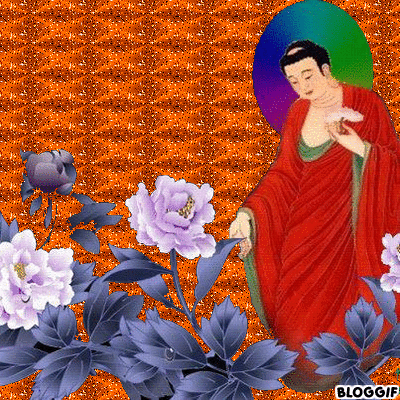





Ok, so you know that meditation has dozens of benefits,
and everybody is doing it. You look for information online or on a
bookstore, and see that there are a LOT of different ways of doing
meditation, dozens of meditation techniques, and some conflicting
information. You wonder which way is best for you.
This article
will help you navigate the sea of different practices of seated
meditation, briefly explaining each of them, and pointing to further
resources. There are literally hundreds – if not thousands – of types of
meditation, so here I will explore only the most popular ones.
You can also check my walking meditation guide, for more dynamic meditation techniques. Or, if you already have some experience with meditation, you might enjoy reading about the meditation experiments I was doing while writing this post.
GENERAL TYPES
Scientists
usually classify meditation based on the way they focus attention, into
two categories: Focused Attention and Open Monitoring. I’d like to
propose a third: Effortless Presence.
Focused attention meditation
Focusing
the attention on a single object during the whole meditation session.
This object may be the breath, a mantra, visualization, part of the
body, external object, etc. As the practitioner advances, his ability to
keep the flow of attention in the chosen object gets stronger, and
distractions become less common and short-lived. Both the depth and
steadiness of his attention are developed.
Examples of these
are: Samatha (Buddhist meditation), some forms of Zazen, Loving Kindness
Meditation…
Open monitoring meditation
Instead
of focusing the attention on any one object, we keep it open,
monitoring all aspects of our experience, without judgment or
attachment. All perceptions, be them internal (thoughts, feelings,
memory, etc.) or external (sound, smell, etc.), are recognized and seen
for what they are. It is the process of non-reactive monitoring of the
content of experience from moment to moment, without going into them.
Examples are: Mindfulness meditation, Vipassana, as well as some types
of Taoist Meditation.
Effortless Presence
It’s
the state where the attention is not focused on anything in particular,
but reposes on itself – quiet, empty, steady, and introverted. We can
also call it “Choiceless Awareness” or “Pure Being”. Most of the meditation quotes you find speak of this state.
This
is actually the true purpose behind all kinds of meditation, and not a
meditation type in itself. All traditional techniques of
meditation recognize that the object of focus, and even the process of
monitoring, is just a means to train the mind, so that effortless
inner silence and deeper states of consciousness can be discovered.
Eventually both the object of focus and the process itself is left
behind, and there is only left the true self of the practitioner, as
“pure presence”.
1) BUDDHIST MEDITATION
Zen Meditation (Zazen)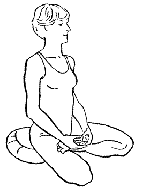
Origin & Meaning
Zazen (坐禅) means
“seated Zen”, or “seated meditation”, in Japanese. It has its roots in
the Chinese Zen Buddhism (Ch’an) tradition, tracing back to Indian monk
Bodhidharma (6th century CE). In the West, its most popular forms comes
from Dogen Zenji (1200~1253), the founder of Soto Zen movement in Japan.
Similar modalities are practiced in the Rinzai school of Zen, in Japan and Korea.
How to do it
It is generally practiced seated on the floor over a mat and cushion, with crossed legs. Traditionally it was done in lotus or half-lotus position, but this is hardly necessary. Nowadays most practitioners sit like this:

Or on a chair:

Images courtesy of Zen Mountain Monastery
The
most important aspect, as you see in the pictures, is keeping the back
completely straight, from the pelvis to the neck. Mouth is kept close
and eyes are kept lowered, with your gaze resting on the ground about
two or three feet in front of you.
As to the mind aspect of it, it’s usually practiced in two ways:
- Focusing on breath —
focus all your attention on the movement of the breath going in and out
through the nose. This may be aided by counting the breath in your
mind. Each time you inhale you count one number, starting with 10, and
then moving backward to 9, 8, 7, etc. When you arrive in 1, you resume
from 10 again. If you get distracted and lose your count, gently bring
back the attention to 10 and resume from there.
- Shikantaza (“just
sitting”) — in this form the practitioner does not use any specific
object of meditation; rather, practitioners remain as much as possible
in the present moment, aware of and observing what passes through their
minds and around them, without dwelling on anything in particular.
It’s a type of Effortless Presence meditation
Is it for me?
Zazen
is a very sober meditation style, and you can easily find a lot of
strong communities practicing it, as well as plenty of information on
the internet. There is a lot of emphasis in keeping the right posture,
as an aid for concentration. It is usually practiced in Zen Buddhist
centers (Sangha), with strong community support.
In many of
them you will find it coupled with other elements of Buddhist practice:
prostrations, a bit of ritualism, chanting, and group readings of the
Buddha teachings. Some people will like this, others won’t. Personally, I
practiced zazen in a Buddhist group for 3 years, and I found that those
elements and a bit of formality can also help create a structure for
the practice, and in themselves they are also meditative.


Vipassana Meditation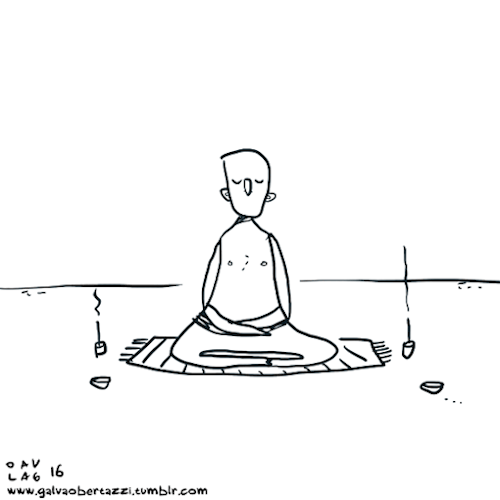
Origin & Meaning
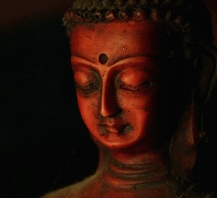
“Vipassana” is a Pali word that
means “insight” or “clear seeing”. It is a traditional Buddhist
practice, dating back to 6th century BC. Vipassana-meditation, as taught
in the last few decades, comes from the Theravada Buddhist tradition,
and was popularized by S. N. Goenka and the Vipassana movement.
Due
to the popularity of Vipassanā-meditation, the “mindfulness of
breathing” has gained further popularity in the West as “mindfulness”.
How to do it
[There is some conflicting information on how to practice Vipassana. In
general, however, most teachers emphasize starting with mindfulness of
breath in the first stages, to stabilize the mind and achieve “access
concentration.” This is more like focused attention meditation. Then the
practice moves on to developing “clear insight” on the bodily
sensations and mental phenomena, observing them moment by moment and not
clinging to any. Here goes an introduction, aimed for beginners. To
know more I’d suggest following up the links provided or learning from a
teacher (perhaps in a Vipassana retreat).]
Ideally, one is to sit on a
cushion on the floor, cross-legged, with your spine erect;
alternatively, a chair may be used, but the back should not be
supported.
The first aspect is to develop concentration, through samatha practice. This is typically done through breathing awareness.
Focus
all your attention, from moment to moment, on the movement of your
breath. Notice the subtle sensations of the movement of the abdomen
rising and falling. Alternatively, one can focus on the sensation of the
air passing through the nostrils and touching the upper lips skin –
though this requires a bit more practice, and is more advanced.
As
you focus on the breath, you will notice that other perceptions and
sensations continue to appear: sounds, feelings in the body, emotions,
etc. Simply notice these phenomena as they emerge in the field of
awareness, and then return to the sensation of breathing. The attention
is kept in the object of concentration (the breathing), while these
other thoughts or sensations are there simply as “background noise”.
The
object that is the focus of the practice (for instance, the movement of
the abdomen) is called the “primary object”. And a “secondary object”
is anything else that arises in your field of perception – either
through your five senses (sound, smell, itchiness in the body, etc.) or
through the mind (thought, memory, feeling, etc.). If a secondary object
hooks your attention and pulls it away, or if it causes desire or
aversion to appear, you should focus on the secondary object for a
moment or two, labeling it with a mental note, like “thinking”,
“memory”, “hearing”, “desiring”. This practice is often called
“noting”.
A mental note identifies an object in general but not in
detail. When you’re aware of a sound, for example, label it “hearing”
instead of “motorcycle,” “voices” or “barking dog.” If an unpleasant
sensation arises, note “pain” or “feeling” instead of “knee pain” or “my
back pain.” Then return your attention to the primary meditation
object. When aware of a fragrance, say the mental note “smelling” for a
moment or two. You don’t have to identify the scent.
When one has
thus gained “access concentration”, the attention is then turned to the
object of practice, which is normally thought or bodily sensations. One
observes the objects of awareness without attachment, letting thoughts
and sensations arise and pass away of their own accord. Mental labeling
(explained above) is often use as a way to prevent you from being
carried away by thoughts, and keep you in more objectively noticing
them.
As a result one develops the clear seeing that the observed
phenomena is pervaded by the three “marks of existence”: impermanence (annica), insatisfactoriness (dukkha) and emptiness of self (annata). As a result, equanimity, peace and inner freedom is developed in relation to these inputs.
Learn more:
Is it for me?
Vipassana
is an excellent meditation to help you ground yourself in your body,
and understand how the processes of your mind work. It is a very popular
style of meditation. You can find plenty of teachers, websites, and
books about it, as well as 3~10 days retreats (donation based). The
teaching of it is always free. There are no formalities or rituals
attached to the practice.
If you are completely new to meditation, Vipassana or Mindfulness are probably good ways for you to start.
Mindfulness Meditation
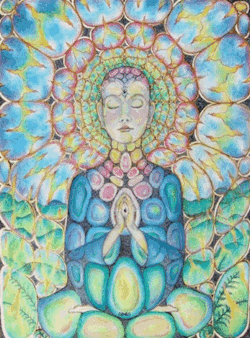

Origin & Meaning
Mindfulness
Meditation is an adaptation from traditional Buddhist meditation
practices, especially Vipassana, but also having strong influence from
other lineages (such as the Vietnamese Zen Buddhism from Thich Nhat Hanh). “Mindfulness” is the common western translation for the Buddhist term sati. Anapanasati,
“mindfulness of breathing”, is part of the Buddhist practice of
Vipassana or insight meditation, and other Buddhist meditational
practices, such as zazen (source: Wikipedia).
One of the main influencers for Mindfulness in the West is John Kabat-Zinn. His Mindfulness-Based Stress Reduction program
(MBSR) – which he developed in 1979 at the University of Massachusetts
Medical School – has been used in several hospitals and health clinic on
the past decades.
How to do it
Mindfulness
meditation is the practice of intentionally focusing on the present
moment, accepting and non-judgmentally paying attention to the
sensations, thoughts, and emotions that arise.
For the “formal
practice” time, sit on a cushion on the floor, or on a chair, with
straight and unsupported back. Pay close attention to the movement of
your breath. When you breath in, be aware that you are breathing in, and
how it feels. When you breath out, be aware you are breathing out. Do
like this for the length of your meditation practice, constantly
redirecting the attention to the breath. Or you can move on to be paying
attention to the sensations, thoughts and feelings that arise.
The
effort is to not intentionally add anything to our present moment
experience, but to be aware of what is going on, without losing
ourselves in anything that arises.
Your mind will get distracted
into going along with sounds, sensations, and thoughts. Whenever that
happens, gently recognize that you have been distracted, and bring the
attention back to the breathing, or to the objective noticing of that
thought or sensation. There is a big different between being inside the thought/sensation, and simply being aware of it’s presence.
Learn to enjoy your practice. Once you are done, appreciate how different the body and mind feel.
There
is also the practice of mindfulness during our daily activities: while
eating, walking, and talking. For “daily life” meditation, the practice
is to pay attention to what is going on in the present moment, to be
aware of what is happening – and not living in “automatic mode”. If you
are speaking, that means paying attention to the words you speak, how
you speak them, and to listen with presence and attention. If you are
walking, that means being more aware of your body movements, your feet
touching the ground, the sounds you are hearing, etc.
Your effort in seated practice supports your daily life practice, and vice-versa. They are both equally important.
Is it for me?
For
the general public, this is perhaps the most advisable way to get
started with meditation. It is the type of meditation that is most
taught at schools and hos
pitals, as far as I am aware. The
“mindfulness movement” as practiced nowadays in society at large, is
not Buddhism, but an adaptation of Buddhist practices due to their
benefits in good physical and mental health and general wellbeing.
For
most people, Mindfulness Meditation may be the only type of meditation
they will like, especially if their focus is only the physical and
mental benefits of meditation, as it is usually taught dissociated from
several of the eastern concepts and philosophies that traditionally
accompanied the practice. And for that it is great – it will bring many good things to your life.
If
your focus is a deeper transformation and spiritual development,
however, then mindfulness meditation may be just an initial step for
you. From here you can then move into Vipassana, Zazen, or other types
of meditation.
Loving Kindness Meditation (Metta Meditation)
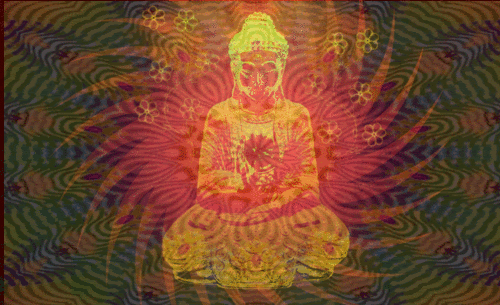
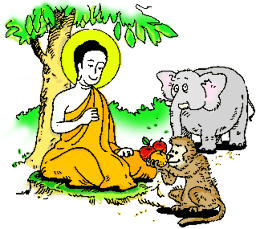
Origin & Meaning


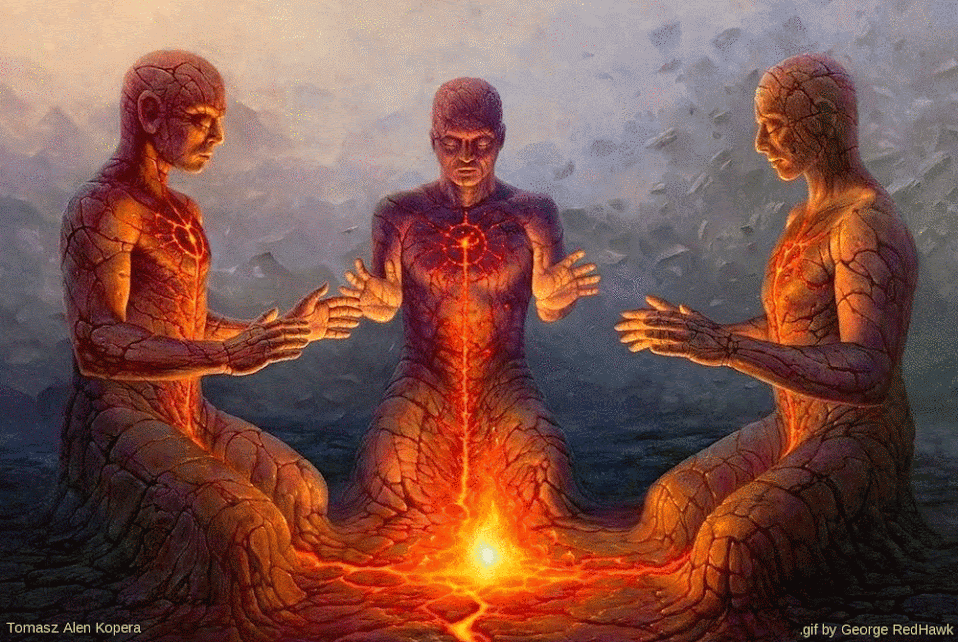



Metta is
a Pali word that means kindness, benevolence, and good will. This
practice comes from the Buddhist traditions, especially the Theravada
and Tibetan lineages. “Compassion meditation” is a contemporary
scientific field that demonstrates
the efficacy of metta and related meditative practices.
Demonstrated
benefits include: boosting one’s ability to empathize with
others; development of positive emotions through compassion, including a
more loving attitude towards oneself; increased self-acceptance;
greater feeling of competence about one’s life; and increased feeling of
purpose in life (read more in our other post).
How to do it
One
sits down in a meditation position, with closed eyes, and generates in
his mind and heart feelings of kindness and benevolence. Start by
developing loving-kindness towards yourself, then progressively towards
others and all beings. Usually this progression is advised:
- oneself
- a good friend
- a “neutral” person
- a difficult person
- all four of the above equally
- and then gradually the entire universe
The
feeling to be developed is that of wishing happiness and well-being for
all. This practice may be aided by reciting specific words or sentences
that evoke the “boundless warm-hearted feeling”, visualizing the
suffering of others and sending love; or by imagining the state of
another being, and wishing him happiness and peace.
The more you practice this meditation, the more joy you will experience. That is the secret of Mathieu Richard’s happiness.
“For
one who attends properly to the liberation of the heart by benevolence,
unarisen ill will does not arise and arisen ill will is abandoned.” – The Buddha
In this article, Emma Seppälä, Ph.D explores the 18 scientifically proven benefits of Loving-Kindness meditation.
Is it for me?
Are
you sometimes too hard on yourself or on others? Or feel like you need
to improve your relationships? Loving-kindness meditation will help you.
It is beneficial both for selfless and self-centered people, and it
will help increase your general level of happiness. You cannot feel
loving-kindness and depression (or any other negative feeling) at the
same time.
It is also often recommended, by Buddhist teachers, as an antidote to insomnia, nightmares, or anger issues.
http://study.com/articles/List_of_Free_Online_Communications_Courses_and_Classes.html
http://cs.brown.edu/courses/cs024/onlineReading.html

30) Classical Basque
30) Euskal Klasikoa
1889 Ar 7 Jun 2016
IKASGAIAK
ra
INSIGHT-sare Free Online A1 (Iratzarritako One) Tipitaka Research & Praktika Unibertsitatea
Visual formatuan (FOA1TRPUVF)
Free Online Elektronikoa Visual Comunicación Ikastaroa on
http://sarvajan.ambedkar.org bidez
https://awakenmediaprabandhak.wordpress.com/
Button Plant Green Butterfly E Mail Animation Clip
awakenonedbuddha@gmail.com
buddhadAONE@gmail.com
sarvajanow@yahoo.co.in
Klasikoa budismoa (iratzarri Sentsibilizazioa batera One irakaskuntzak) munduan sartzen, eta denek dute eskubide esklusiboa: JC
Energia gehien positiboak informatiboak eta ikerketa bideratutako
gunean Iratzarritako One irakaspenak zabaltzeko Sentsibilizazioa rekin
Buda eta Techno-politiko-Socio eraldaketa eta Ekonomi Emantzipazio
Mugimendua milioika pertsona jarraian guztiak 105 hizkuntzetan Klasikoan
mundu osoan zehar.
itzulpen zehatz bihurtzean Unibertsitate honetan ikasgai bat
norberaren ama-hizkuntzan Google itzulpenak honetarako eta hedapena gisa
eskubidea Stream bat bihurtu
Enterer (Sottapanna) eta Betiko Gozamena erdiesteko Final Helburua gisa.
Live eta Ausartzen
http://liveanddare.com/types-of-meditation/
Master Your Mind, Master Your Life
Meditazio motak - Meditazio teknikak Orokorra
meditazio zentro Sri budista sambodhi
https://buddhadharmaobfinternational.files.wordpress.com/2013/06/bloggif_51c1bf428699c.gifhttps://buddhadharmaobfinternational.files.wordpress.com/2008/12/vegan.gif?w=540
Meditazio motak
Ok, beraz, meditazio onurak dozenaka badakizu, eta denek egiten da. Informazio
bilatzen online edo liburu-denda batean, eta ikusten ez dagoela
meditazioa, meditazio teknikak dozenaka egiteko modu desberdinak asko,
eta datuek gatazka batzuk. Galdetzen duzu zein bide da onena duzu.
Artikulu
hau eserita meditazio praktika desberdinak itsasoan nabigatzeko
lagunduko dizu, labur-labur horietako bakoitza azaltzeko, eta baliabide
gehiago seinalatuz. Literalki ehunka - ez bada milaka - Meditazio mota baten, beraz, hemen bakarrik ezagunena direnak aztertuko dut.
Ere egiaztatu dezakezu nire oinez meditazio gida, meditazio dinamikoagoa teknika da. Edo, meditazio esperientzia izatea dagoeneko bada, baliteke meditazioa
esperimentuak bitartean post hau idazten ari nintzen irakurtzen
gozatzeko aukera.
The “onena” Meditazio Meditazio zuretzat lan egiten duen, zuk bizitzako etapa honetan da.
MOTAK GENERAL
Zientzialariek normalean sailkatzeko meditazioa oinarritutako modu arreta dute, bi kategoriatan on: arreta eta Open Jarraipen. Effortless Presentzia: hirugarren bat proposatu nahi nuke.
Arreta meditazioa
objektu bakar baten gainean arreta zentratuz du hitzaldi guztiak saioan. Objektu
hau hatsa, mantra bat, bistaratzea, gorputza, kanpoko objektu eta
abarren parte izan daiteke Profesionalak aurrera doan heinean,
arreta-fluxua mantentzeko aukeratutako objektuaren bere gaitasuna
lortzen indartsuagoa, eta oharkabetasunak bihurtu gutxiago komuna eta
motz bizi izan zen. Biak sakontasuna eta bere arreta steadiness garatzen dira.
Horien adibide dira: Samatha (meditazio budista), Zazen forma batzuk,
Adeitasuna Meditazio maitatzeko …
Open jarraipen meditazioa
Horren
ordez, inork edozein objektutan arreta bideratua, hura irekita mantendu
dugu, gure esperientziaren alderdi guztiak kontrolatzea, epaia edo
eranskin gabe. pertzepzio
guztiak, izan horiek barne (pentsamenduak, sentimenduak, memoria, eta
abar) edo kanpoko (soinua, usaina, eta abar), aitortzen diren eta zer
diren ikusi. ez-erreaktiboa une une batetik esperientzia edukiaren jarraipen-prozesua da, horiek sartu gabe.
Adibideak dira: Mindfulness meditazio, Vipassana, baita taoista Meditazio mota batzuk.
effortless Presentzia
egoera arreta ez dago ezer bereziki bideratuta dago, baina bera on reposes - lasai, hutsik, danborrada, eta barnerakoia. halaber dugu “Choiceless Sentsibilizazioa” edo “Pure Being” deitu daiteke. Meditazio komatxo gehienak egoera horretaz hitz aurkituko duzu.
Hau da, benetan meditazio mota guztiak atzean benetako helburua, eta ez meditazioa berez mota bat. meditazio
teknika tradizionalak guztiak ezagutzen foku objektu, eta are gehiago,
jarraipen-prozesua, bide bat besterik adimena trebatzeko, beraz,
effortless barruko isiltasuna eta sakonagoa estatu kontzientziaren
aurkitu ahal izango da. Azkenean bai foku objektu eta prozesu bera geratzen da atzean, eta ez
da egia Profesionalak autogobernuan bakarrik utzi, “presentzia hutsa”
gisa.
1) meditazio budista
Zen meditazioa (Zazen)
Jatorri eta esanahia
Zazen (坐禅) esan nahi du “eserita Zen”, edo “meditazio eserita”, japonieraz. Bere Txinako Zen budismoa (Ch’an) sustraiak ditu, atzera Bektorizatu Indian monje Bodhidharma (6 mendean CE) ra. Mendebaldean, bere forma ezagunenetako Dogen Zenji (1200 ~ 1253), Soto Zen mugimenduaren sortzailea Japoniako dator. Similar modalitate daude Rinzai Zen eskolako praktikatzen, Japonia eta Korea.
Nola egiten den
Da, oro har praktikatzen esterilla bat eta kuxin, hankak zeharkatu baino gehiago lurrean eserita. Tradizionalki da lotus edo erdi-lotus posizioa ere egin zen, baina hau ez da apenas beharrezkoa. Egun profesionalek gehien hau bezalako eseri:
Meditazio motak - Zazen postura
Edo, aulki baten gainean:
Meditazio motak - zazen aulki
Irudiak Zen Mountain monasterioa adeitasuna
alderdirik garrantzitsuena, argazkiak ikusten duzun bezala, atzeko erabat zuzen, pelbisa, lepoan mantenduz. Aho estua mantentzen da eta begiak apaldu dira mantendu, zure begirada
lurrean atsedenerako zure aurrean bi edo hiru oinak buruz.
kontuan alderdi dagokionez, normalean bi eratara praktikatzen:
arnasa bideratua - fokua zure arreta guztia arnasa mugimendua eta ateratzen sudurra bidez. Hau arnasa kontatuta zure kontuan lagundurik egon daiteke. Aldi
bakoitzean inhale zenbaki bat zenbatu dituzu, 10, hasi eta gero atzera
mugitzen 9, 8, 7, etab ra iristean 1 duzu, berrekiteko 10etatik duzu
berriro. Lortuko duzu arreta bada eta zure count galtzen, poliki-poliki atzera ekarri arreta 10 eta hortik berrekiteko.
Shikantaza ( “besterik eserita”) - formulario hau Profesionalak ez du inolako meditazio objektu espezifikoak erabiltzeko; baizik
eta, profesionalen ahalik eta gehien geratzen Gaur, jakitun eta, bere
adimenak bidez eta horien inguruan denari erreparatuz, zehatzik
etxebizitza gabe. Effortless Presentzia meditazio mota bat da
Da niretzat?
Zazen
oso soila meditazio estilo bat da, eta zuk komunitateen indartsu asko
landu, baita informazio ugari Interneten erraz aurkituko. Ez dago nabarmenduz asko eskuineko jarrera mantenduz, kontzentrazioa egiteko laguntza gisa ere da. Ohi Zen budistak zentroak (Sangha), praktikatzen komunitateko laguntza indartsuekin.
prostrations,
ritualism pixka bat, kantatuz, eta talde irakurketak Buda irakaspenak:
Horietako askotan akoplatutako bestelako praktika budista elementu
aurkituko duzu. Batzuek hau gustuko izango, beste batzuk ez. Pertsonalki, zazen praktikatzen dut talde budista batean 3 urtez, eta
hori elementu horiek eta tramite pixka bat ere lagundu praktika egitura
bat sortzea, eta beraiek ere meditazio dira aurkitu dut.
Vipassana Meditazio
Jatorri eta esanahia
Meditazio motak - Vipassana
“Vipassana” Pali hitza “ikuspegi” edo “mira, argi eta garbi” esan nahi da. Budista praktika tradizional bat, atzera Ka 6an mendean da. Vipassana meditazio-, irakatsi azken hamarkadetan bezala, Theravada
budismoaren tradizioan dator, eta S. N. Goenkaren eta Vipassana
mugimendua ezagun.
Dela Vipassana meditazio-ospea, “arnasketa mindfulness” ospea gehiago irabazi du, Mendebaldean “mindfulness” gisa.
Nola egiten den
[Ez dago Vipassana nola landu buruzko informazio gatazkatsuak batzuk. Oro
har, ordea, irakasleak gehien nabarmendu du arnasa mindfulness lehen
etapetan hasita, kontuan egonkortzeko eta lortzeko “sarbide
kontzentrazioa.” Hau gehiago zentratu arreta meditazioa bezalakoa da. Ondoren
praktika mugitzen “argi insight” garatzeko gorputzeko sentsazioak eta
mental fenomenoak, horiek une errespetatuz une eta ez edozein clinging. Hemen sarrera bat, hasiberrientzako zuzenduta doa. gehiago jakin nahi nuke honako emandako edo irakasle bat ikasteko (agian Vipassana erretiro batean) loturak proposatzen dut.]
Ahal izanez gero, bat da, lurrean, hankak gurutzaturik, zure bizkarrezurra tente ekin kuxin baten gainean eseri; txandaka, aulki batean erabili ahal izango dira, baina atzealdean behar ez izatea.
lehen alderdia da kontzentrazio garatzeko, samatha praktika bidez. Hau da, normalean arnasketa sentsibilizazio bidez egin.
Focus zure arreta guztia, une batetik une batez, zure arnasa mugimendua. Iragarki sotila sabelaldea gorantz erortzen mugimendua sentsazioak. Bestela, airean Sudur igaroz eta goiko ezpainak azala ukitzeko
sentsazioa aldean ikus daitezke zentratu - hau praktika pixka bat
gehiago eskatzen du ordea, eta gehiago aurreratu.
Arnasa
ardatz gisa, beste pertzepzio eta sentsazio hori agertzen jarraituko
nabarituko duzu: soinuak, gorputzean sentimenduak, emozioak, etab
Besterik gabe nabarituko fenomeno horiek azaleratzen dute
sentsibilizazio alorrean bezala, eta, ondoren,-sentsazioa itzuli arnasketa. arreta, kontzentrazioa (arnasketa) objektu mantendu, beste pentsamendu
edo sentsazio horiek, berriz, ez dira, besterik gabe, “zarata” gisa.
duten praktika bideratzen da objektuaren (esaterako, abdominalak mugimendua) deritzo “objektu lehen”. bai
zure bost zentzumenak (soinua, usaina, gorputzean pain, eta abar) bidez
edo adimena (pentsamendu, memoria, sentimendu, eta abar) bidez - Eta
bat “bigarren mailako objektu” beste ezer zure pertzepzioa eremuan
sortzen da. bigarren
mailako objektu bat da zure arreta amu bada eta tira kanpoan, edo
eragiten du nahia edo higuina agertuko balitz, une bat edo bi bigarren
mailako objektu behar duzu arreta, hura etiketatzea mental ohar batekin,
“pentsatzen”, “memoria” bezalako “entzumena”, “seguritate eta hura”. Praktika hau, sarritan, “egoten”.
mental ohar bat objektu bat identifikatzen orokorrean baina ez zehatz-mehatz. Zaudenean
soinu bat jakitun, adibidez, etiketa “audientzia” ordez “motozikleta”,
“ahotsak” edo “txakur zaunka.” Desatsegina sentsazio bat sortzen bada,
kontutan “mina” edo “feeling” ordez “belaun mina “edo” nire bizkarreko mina. “Orduan itzuli zure arreta adierazten meditazio objektu bat. usain jakitun, esan du ohar mental “usnaka” une bat edo bi. Ez daukazu usaina identifikatzeko.
Noiz
bat du, beraz, irabazi “sarbide kontzentrazio”, arreta gero praktikan
objektu, hau da, normalean pentsatu edo gorputzeko sentsazioak
aktibatuta dago. One
sentsibilizazio objektuak behatzen eranskin gabe, uzteko pentsamenduak
eta sentsazioak sortzen eta pasatzeko beren kabuz kanpoan. Buru etiketatzea (lehen azaldu) askotan modu bat saihesteko ihes
egiten ari dira pentsamenduak by bezala erabili, eta mantentzeko duzu
gehiago objektiboki haiek ohartu ere.
Ondorioz
bat argi garatzen behatutako fenomenoak hori hiru “existentziaren
markak” du ebakiduraz ikusten: impermanence (annica), insatisfactoriness
(dukkha) eta auto (annata) hutsunearen. Ondorioz, sosegua, bakea eta barneko askatasuna Sarrerek hauen inguruan garatzen da.
Gehiago ikasi:
Vipassana motak (Anh-Minh Do erantzuna irakurri)
Vipassana Dhura (oso sakona artikulu)
hasiberrientzako Vipassana (Goenkaren style)
Mindfulness Plain English (free eBook)
Visit Vipassana zentro duzu gertu
Da niretzat?
Vipassana meditazio bikainak norberarentzat lurrean zure gorputzean laguntzeko, eta nola zure burua lan-prozesuak ulertzen da. meditazio estilo oso ezaguna da. irakasleak,
webguneak, eta hari buruzko liburu ugari, baita 3 ~ 10 eguneko
erretiroak (dohaintza oinarritutako) aurkitu ahal izango duzu. haren irakaskuntza da beti doan. Ez dago praktika atxikia izapideak edo erritu.
zara erabat meditazioa berria bada, Vipassana edo Mindfulness dira ziurrenik hasten zara bide ona.
mindfulness Meditationhttps://67.media.tumblr.com/ba13c508cf5b31cc4e81e1336d3a5698/tumblr_inline_o3y6y7pdwS1r1aqjj_540.gif
Jatorri eta esanahia
Mindfulness
Meditazio tradizionala meditazio budista praktika, batez Vipassana,
baina baita beste leinuek (hala nola Vietnamese Zen Thich Nhat Hanh
batetik budismoa) tik eragin handia izatea egokitzapen bat da. “Mindfulness” epe budista sati for mendebaldeko komun itzulpena da. Anapanasati, “arnasketa mindfulness”, Vipassana praktika budista edo
insight meditazio, eta beste budista meditational praktika, hala nola
zazen (: Wikipedia iturria) gisa parte da.
du Mindfulness Mendebaldean dagoen influencers nagusietako bat John Kabat-Zinn da. Bere Mindfulness Oinarritutako Stress murrizketa programa (MBSR) - eta
hori garatu zuen, 1979an Massachusetts Medical School Unibertsitatean -
du azken hamarkadetan hainbat ospitale eta osasun-klinika erabiltzen
da.
Nola egiten den
Mindfulness meditazio nahita oraingo unera bideratua, onartuz eta
ez-judgmentally arreta sentsazioak, pentsamenduak, eta sortzen diren
emozioak praktika da.
du “praktikan formal” aldiz, kuxin baten gainean eseri lurrean, edo aulki bat, bizkarra zuzen eta onartzen ez dituzten. Ordaindu itxi arreta zure arnasa mugimendua. Noiz duzu arnasa, kontuan izan duzu arnasa, eta nola sentitzen. Noiz arnasa out, jakitun out arnasa hartzen ari zara. hau bezalako Egin zure meditazioa praktika luzera, etengabe arnasa arreta berbideratu. Edo mugitu ahal izango duzu, arreta berezia jarriz sortzen diren sentsazioak, pentsamenduak eta sentimenduak izan behar.
Garaipena da, ez nahita gehitu ezer gure oraingo une esperientziari,
baina zer gertatzen jakitun izan, geure galtzeko ezer sortzen hasi gabe.
Zure kontuan soinuak, sentsazioak, eta pentsamenduak batera joan sartu arreta eskuratzeko izango. hori
gertatzen den bakoitzean, astiro-astiro aitortu izan duten arreta dira,
eta arreta ekarri itzuli arnasketa, edo pentsamendu edo sentsazio hori
ohartu helburuari. Ez dago pentsamenduaren / sentsazio barruan egotea, eta, besterik
gabe, presentzia da jakitun izatearen artean desberdinak handi bat da.
Ikasi zure praktika gozatzeko. Egin ondoren, eskertuko gorputza eta burua nola ezberdinak sentitzen.
Halaber, bada mindfulness praktika gure eguneroko jardueretan zehar: jateko, berriz, oinez, eta hizketan. “Eguneroko
bizitza” meditazioa For, praktika da arreta zer ari den gertatzen Gaur
den, zer gertatzen ari den jakitun izan - eta ez “modu automatikoan”
bizi. zuk
hitz egiten ari bada, horrek esan nahi du, arreta berezia jarriz hitz
egiten duzu hitz egin, nola hitz egin duzu, eta presentzia eta arretaz
entzun. ibiltzen ari zaren bada, horrek esan nahi du gehiago zure gorputzaren
mugimenduak jakitun izanik, zure oinak lurrean ukitu, soinuak, entzumena
ari zaren etc.
Zure eserita praktikan ahalegin zure eguneroko bizitzan praktikan onartzen, eta alderantziz. biak berdin garrantzitsuak dira.
Da niretzat?
Publiko orokorrarentzat, hau da, beharbada, gehien komeni meditazio urratsak emateko bidea. hori gehien eskolak eta hos irakasten diren meditazio mota erabili da
pitals, orain arte bezala, jakitun naiz gisa. The “mindfulness mugimendua” gaur egun praktikatzen gizartean
handietako, ez da budismoa, baina praktika budista egokitzapen bat dela
eta beren osasun fisiko eta mental ona eta ongizate orokorrean onurak.
Jende
askorentzat, Mindfulness Meditazio Meditazio mota bakarra nahi izango
dute, euren ikuspegia meditazioa onura fisiko eta mental bakarra da
batez ere izan daiteke, normalean erakusten den moduan ekialdeko
kontzeptu eta filosofia, tradizioz lagunduta praktika batzuk bereizi . Eta hori handia da - gauza on asko ekarriko ditu, zure bizitza.
zure
ikuspegia sakonago eraldaketa eta garapen espirituala da, bada, ordea,
gero mindfulness meditazio besterik hasierako zuretzat urrats bat izan
daiteke. Hemendik gero dezakezu Vipassana, Zazen, edo beste Meditazio mota sartu mugitu.
Maitekorra adeitasuna Meditazio (Metta Meditazio)
Jatorri eta esanahia
maitekorra adeitasuna meditazioa
https://what-buddha-said.net/Pics/deer.friendliness.gif
Metta Pali hitza duten adeitasuna, onginahia, eta borondate ona esan nahi da. Praktika hau budista tradizio, batez Theravada eta Tibeteko leinuak dator. “Errukia meditazioa” bat arlo zientifiko garaikideak erakusten da
Metta eta erlazionatutako meditazio praktikak eraginkortasuna.
Frogatu onurak honakoak dira: norberaren besteekin enpatia gaitasuna indartzeko; Emozio positibo errukia bidez, jarrera bat maitekorra norbera bidean barne garapena; handitu auto-onarpena; norberaren bizitzari buruzko eskumen-sentimendu handiagoa; eta handitu helburua bizitza sentimendua (gehiago irakurri gure beste post batean).
Nola egiten den
Eseri One meditazio jarreran, begiak itxita, eta bere gogoa eta bihotza adeitasuna eta onberatasun sentimenduak sortzen. Hasi zeuk bidean maitasuna garatzeko, ondoren, pixkanaka beste batzuk eta izaki guztiak bidean arabera. Normalean progresio hau gomendagarria da:
norbera
lagun ona
a “neutral” pertsona
Pertsona bat zaila
guztien gainetik lau berdin
eta gero, pixkanaka, unibertso osoa
Sentimendua garatu beharreko zoriontasuna eta guztientzako ongizatea opatzeko dela. Praktika
hau da “mugarik epel-epel sentsazioa” gogora ekartzen duten hitzak edo
esaldiak partida errezitatuz, besteen sufrimendua ikusteko eta maitasuna
bidaliz lagundutako ahal izango dira; edo beste izatearen egoera irudikatzeko, eta hura zoriona eta bakea nahi duten moduan.
Gehiago meditazio honetan, gehiago poza esperientzia izango duzu lantzeko. Hori Mathieu Richard zoriontasuna sekretua.
“Bat bezala joaten bihotza askapen onberatasun arabera dezan, unarisen
gaixo borondatea ez da sortzen eta sortu diren gaixo borondatea
abandonatu da.” - Buddha
Artikulu honetan, Emma Seppäläri, Ph.D 18 zientifikoki frogatu maitasuna meditazio onurak aztertzen du.
Da niretzat?
Are you batzuetan too yourself on edo beste hard? Edo sentitzen zure harremanak hobetzeko behar duzun bezala? Maitasunean meditazio lagunduko dizu. onuragarria
bai ALTRUISTA eta auto-zentratua duten pertsonentzat, eta zure
zoriontasun maila orokorra handitu laguntzeko izango da. Ezin duzu sentitzen da bere maitasunean eta depresioa (edo beste edozein sentimendu negatiboa) eta, aldi berean.
Gainera, askotan, gomendagarria, budista irakasleek, insomnioa, amesgaiztoak, edo haserrea gaiak antidoto gisa.
http://study.com/articles/List_of_Free_Online_Communications_Courses_and_Classes.html
http://cs.brown.edu/courses/cs024/onlineReading.html
https://45.media.tumblr.com/947ce94ffe7923653d5d5ac9f60c544e/tumblr_o0zjq4XKIE1ss46elo1_500.gif
31) Classical Belarusian
31) Klasikoa Belarusian
1889 Ar 7 Jun 2016
IKASGAIAK
ra
INSIGHT-sare Free Online A1 (Iratzarritako One) Tipitaka Research & Praktika Unibertsitatea
Visual formatuan (FOA1TRPUVF)
Free Online Elektronikoa Visual Comunicación Ikastaroa on
http://sarvajan.ambedkar.org bidez
https://awakenmediaprabandhak.wordpress.com/
Button Plant Green Butterfly E Mail Animation Clip
awakenonedbuddha@gmail.com
buddhadAONE@gmail.com
sarvajanow@yahoo.co.in
Klasikoa budismoa (iratzarri Sentsibilizazioa batera One irakaskuntzak) munduan sartzen, eta denek dute eskubide esklusiboa: JC
Energia gehien positiboak informatiboak eta ikerketa bideratutako
gunean Iratzarritako One irakaspenak zabaltzeko Sentsibilizazioa rekin
Buda eta Techno-politiko-Socio eraldaketa eta Ekonomi Emantzipazio
Mugimendua milioika pertsona jarraian guztiak 105 hizkuntzetan Klasikoan
mundu osoan zehar.
itzulpen zehatz bihurtzean Unibertsitate honetan ikasgai bat
norberaren ama-hizkuntzan Google itzulpenak honetarako eta hedapena gisa
eskubidea Stream bat bihurtu
Enterer (Sottapanna) eta Betiko Gozamena erdiesteko Final Helburua gisa.
Live eta Ausartzen
http://liveanddare.com/types-of-meditation/
Master Your Mind, Master Your Life
Meditazio motak - Meditazio teknikak Orokorra
meditazio zentro Sri budista sambodhi
https://buddhadharmaobfinternational.files.wordpress.com/2013/06/bloggif_51c1bf428699c.gifhttps://buddhadharmaobfinternational.files.wordpress.com/2008/12/vegan.gif?w=540
Meditazio motak
Ok, beraz, meditazio onurak dozenaka badakizu, eta denek egiten da. Informazio
bilatzen online edo liburu-denda batean, eta ikusten ez dagoela
meditazioa, meditazio teknikak dozenaka egiteko modu desberdinak asko,
eta datuek gatazka batzuk. Galdetzen duzu zein bide da onena duzu.
Artikulu
hau eserita meditazio praktika desberdinak itsasoan nabigatzeko
lagunduko dizu, labur-labur horietako bakoitza azaltzeko, eta baliabide
gehiago seinalatuz. Literalki ehunka - ez bada milaka - Meditazio mota baten, beraz, hemen bakarrik ezagunena direnak aztertuko dut.
Ere egiaztatu dezakezu nire oinez meditazio gida, meditazio dinamikoagoa teknika da. Edo, meditazio esperientzia izatea dagoeneko bada, baliteke meditazioa
esperimentuak bitartean post hau idazten ari nintzen irakurtzen
gozatzeko aukera.
The “onena” Meditazio Meditazio zuretzat lan egiten duen, zuk bizitzako etapa honetan da.
MOTAK GENERAL
Zientzialariek normalean sailkatzeko meditazioa oinarritutako modu arreta dute, bi kategoriatan on: arreta eta Open Jarraipen. Effortless Presentzia: hirugarren bat proposatu nahi nuke.
Arreta meditazioa
objektu bakar baten gainean arreta zentratuz du hitzaldi guztiak saioan. Objektu
hau hatsa, mantra bat, bistaratzea, gorputza, kanpoko objektu eta
abarren parte izan daiteke Profesionalak aurrera doan heinean,
arreta-fluxua mantentzeko aukeratutako objektuaren bere gaitasuna
lortzen indartsuagoa, eta oharkabetasunak bihurtu gutxiago komuna eta
motz bizi izan zen. Biak sakontasuna eta bere arreta steadiness garatzen dira.
Horien adibide dira: Samatha (meditazio budista), Zazen forma batzuk,
Adeitasuna Meditazio maitatzeko …
Open jarraipen meditazioa
Horren
ordez, inork edozein objektutan arreta bideratua, hura irekita mantendu
dugu, gure esperientziaren alderdi guztiak kontrolatzea, epaia edo
eranskin gabe. pertzepzio
guztiak, izan horiek barne (pentsamenduak, sentimenduak, memoria, eta
abar) edo kanpoko (soinua, usaina, eta abar), aitortzen diren eta zer
diren ikusi. ez-erreaktiboa une une batetik esperientzia edukiaren jarraipen-prozesua da, horiek sartu gabe.
Adibideak dira: Mindfulness meditazio, Vipassana, baita taoista Meditazio mota batzuk.
effortless Presentzia
egoera arreta ez dago ezer bereziki bideratuta dago, baina bera on reposes - lasai, hutsik, danborrada, eta barnerakoia. halaber dugu “Choiceless Sentsibilizazioa” edo “Pure Being” deitu daiteke. Meditazio komatxo gehienak egoera horretaz hitz aurkituko duzu.
Hau da, benetan meditazio mota guztiak atzean benetako helburua, eta ez meditazioa berez mota bat. meditazio
teknika tradizionalak guztiak ezagutzen foku objektu, eta are gehiago,
jarraipen-prozesua, bide bat besterik adimena trebatzeko, beraz,
effortless barruko isiltasuna eta sakonagoa estatu kontzientziaren
aurkitu ahal izango da. Azkenean bai foku objektu eta prozesu bera geratzen da atzean, eta ez
da egia Profesionalak autogobernuan bakarrik utzi, “presentzia hutsa”
gisa.
1) meditazio budista
Zen meditazioa (Zazen)
Jatorri eta esanahia
Zazen (坐禅) esan nahi du “eserita Zen”, edo “meditazio eserita”, japonieraz. Bere Txinako Zen budismoa (Ch’an) sustraiak ditu, atzera Bektorizatu Indian monje Bodhidharma (6 mendean CE) ra. Mendebaldean, bere forma ezagunenetako Dogen Zenji (1200 ~ 1253), Soto Zen mugimenduaren sortzailea Japoniako dator. Similar modalitate daude Rinzai Zen eskolako praktikatzen, Japonia eta Korea.
Nola egiten den
Da, oro har praktikatzen esterilla bat eta kuxin, hankak zeharkatu baino gehiago lurrean eserita. Tradizionalki da lotus edo erdi-lotus posizioa ere egin zen, baina hau ez da apenas beharrezkoa. Egun profesionalek gehien hau bezalako eseri:
Meditazio motak - Zazen postura
Edo, aulki baten gainean:
Meditazio motak - zazen aulki
Irudiak Zen Mountain monasterioa adeitasuna
alderdirik garrantzitsuena, argazkiak ikusten duzun bezala, atzeko erabat zuzen, pelbisa, lepoan mantenduz. Aho estua mantentzen da eta begiak apaldu dira mantendu, zure begirada
lurrean atsedenerako zure aurrean bi edo hiru oinak buruz.
kontuan alderdi dagokionez, normalean bi eratara praktikatzen:
arnasa bideratua - fokua zure arreta guztia arnasa mugimendua eta ateratzen sudurra bidez. Hau arnasa kontatuta zure kontuan lagundurik egon daiteke. Aldi
bakoitzean inhale zenbaki bat zenbatu dituzu, 10, hasi eta gero atzera
mugitzen 9, 8, 7, etab ra iristean 1 duzu, berrekiteko 10etatik duzu
berriro. Lortuko duzu arreta bada eta zure count galtzen, poliki-poliki atzera ekarri arreta 10 eta hortik berrekiteko.
Shikantaza ( “besterik eserita”) - formulario hau Profesionalak ez du inolako meditazio objektu espezifikoak erabiltzeko; baizik
eta, profesionalen ahalik eta gehien geratzen Gaur, jakitun eta, bere
adimenak bidez eta horien inguruan denari erreparatuz, zehatzik
etxebizitza gabe. Effortless Presentzia meditazio mota bat da
Da niretzat?
Zazen
oso soila meditazio estilo bat da, eta zuk komunitateen indartsu asko
landu, baita informazio ugari Interneten erraz aurkituko. Ez dago nabarmenduz asko eskuineko jarrera mantenduz, kontzentrazioa egiteko laguntza gisa ere da. Ohi Zen budistak zentroak (Sangha), praktikatzen komunitateko laguntza indartsuekin.
prostrations,
ritualism pixka bat, kantatuz, eta talde irakurketak Buda irakaspenak:
Horietako askotan akoplatutako bestelako praktika budista elementu
aurkituko duzu. Batzuek hau gustuko izango, beste batzuk ez. Pertsonalki, zazen praktikatzen dut talde budista batean 3 urtez, eta
hori elementu horiek eta tramite pixka bat ere lagundu praktika egitura
bat sortzea, eta beraiek ere meditazio dira aurkitu dut.
Vipassana Meditazio
Jatorri eta esanahia
Meditazio motak - Vipassana
“Vipassana” Pali hitza “ikuspegi” edo “mira, argi eta garbi” esan nahi da. Budista praktika tradizional bat, atzera Ka 6an mendean da. Vipassana meditazio-, irakatsi azken hamarkadetan bezala, Theravada
budismoaren tradizioan dator, eta S. N. Goenkaren eta Vipassana
mugimendua ezagun.
Dela Vipassana meditazio-ospea, “arnasketa mindfulness” ospea gehiago irabazi du, Mendebaldean “mindfulness” gisa.
Nola egiten den
[Ez dago Vipassana nola landu buruzko informazio gatazkatsuak batzuk. Oro
har, ordea, irakasleak gehien nabarmendu du arnasa mindfulness lehen
etapetan hasita, kontuan egonkortzeko eta lortzeko “sarbide
kontzentrazioa.” Hau gehiago zentratu arreta meditazioa bezalakoa da. Ondoren
praktika mugitzen “argi insight” garatzeko gorputzeko sentsazioak eta
mental fenomenoak, horiek une errespetatuz une eta ez edozein clinging. Hemen sarrera bat, hasiberrientzako zuzenduta doa. gehiago jakin nahi nuke honako emandako edo irakasle bat ikasteko (agian Vipassana erretiro batean) loturak proposatzen dut.]
Ahal izanez gero, bat da, lurrean, hankak gurutzaturik, zure bizkarrezurra tente ekin kuxin baten gainean eseri; txandaka, aulki batean erabili ahal izango dira, baina atzealdean behar ez izatea.
lehen alderdia da kontzentrazio garatzeko, samatha praktika bidez. Hau da, normalean arnasketa sentsibilizazio bidez egin.
Focus zure arreta guztia, une batetik une batez, zure arnasa mugimendua. Iragarki sotila sabelaldea gorantz erortzen mugimendua sentsazioak. Bestela, airean Sudur igaroz eta goiko ezpainak azala ukitzeko
sentsazioa aldean ikus daitezke zentratu - hau praktika pixka bat
gehiago eskatzen du ordea, eta gehiago aurreratu.
Arnasa
ardatz gisa, beste pertzepzio eta sentsazio hori agertzen jarraituko
nabarituko duzu: soinuak, gorputzean sentimenduak, emozioak, etab
Besterik gabe nabarituko fenomeno horiek azaleratzen dute
sentsibilizazio alorrean bezala, eta, ondoren,-sentsazioa itzuli arnasketa. arreta, kontzentrazioa (arnasketa) objektu mantendu, beste pentsamendu
edo sentsazio horiek, berriz, ez dira, besterik gabe, “zarata” gisa.
duten praktika bideratzen da objektuaren (esaterako, abdominalak mugimendua) deritzo “objektu lehen”. bai
zure bost zentzumenak (soinua, usaina, gorputzean pain, eta abar) bidez
edo adimena (pentsamendu, memoria, sentimendu, eta abar) bidez - Eta
bat “bigarren mailako objektu” beste ezer zure pertzepzioa eremuan
sortzen da. bigarren
mailako objektu bat da zure arreta amu bada eta tira kanpoan, edo
eragiten du nahia edo higuina agertuko balitz, une bat edo bi bigarren
mailako objektu behar duzu arreta, hura etiketatzea mental ohar batekin,
“pentsatzen”, “memoria” bezalako “entzumena”, “seguritate eta hura”. Praktika hau, sarritan, “egoten”.
mental ohar bat objektu bat identifikatzen orokorrean baina ez zehatz-mehatz. Zaudenean
soinu bat jakitun, adibidez, etiketa “audientzia” ordez “motozikleta”,
“ahotsak” edo “txakur zaunka.” Desatsegina sentsazio bat sortzen bada,
kontutan “mina” edo “feeling” ordez “belaun mina “edo” nire bizkarreko mina. “Orduan itzuli zure arreta adierazten meditazio objektu bat. usain jakitun, esan du ohar mental “usnaka” une bat edo bi. Ez daukazu usaina identifikatzeko.
Noiz
bat du, beraz, irabazi “sarbide kontzentrazio”, arreta gero praktikan
objektu, hau da, normalean pentsatu edo gorputzeko sentsazioak
aktibatuta dago. One
sentsibilizazio objektuak behatzen eranskin gabe, uzteko pentsamenduak
eta sentsazioak sortzen eta pasatzeko beren kabuz kanpoan. Buru etiketatzea (lehen azaldu) askotan modu bat saihesteko ihes
egiten ari dira pentsamenduak by bezala erabili, eta mantentzeko duzu
gehiago objektiboki haiek ohartu ere.
Ondorioz
bat argi garatzen behatutako fenomenoak hori hiru “existentziaren
markak” du ebakiduraz ikusten: impermanence (annica), insatisfactoriness
(dukkha) eta auto (annata) hutsunearen. Ondorioz, sosegua, bakea eta barneko askatasuna Sarrerek hauen inguruan garatzen da.
Gehiago ikasi:
Vipassana motak (Anh-Minh Do erantzuna irakurri)
Vipassana Dhura (oso sakona artikulu)
hasiberrientzako Vipassana (Goenkaren style)
Mindfulness Plain English (free eBook)
Visit Vipassana zentro duzu gertu
Da niretzat?
Vipassana meditazio bikainak norberarentzat lurrean zure gorputzean laguntzeko, eta nola zure burua lan-prozesuak ulertzen da. meditazio estilo oso ezaguna da. irakasleak,
webguneak, eta hari buruzko liburu ugari, baita 3 ~ 10 eguneko
erretiroak (dohaintza oinarritutako) aurkitu ahal izango duzu. haren irakaskuntza da beti doan. Ez dago praktika atxikia izapideak edo erritu.
zara erabat meditazioa berria bada, Vipassana edo Mindfulness dira ziurrenik hasten zara bide ona.
mindfulness Meditationhttps://67.media.tumblr.com/ba13c508cf5b31cc4e81e1336d3a5698/tumblr_inline_o3y6y7pdwS1r1aqjj_540.gif
Jatorri eta esanahia
Mindfulness
Meditazio tradizionala meditazio budista praktika, batez Vipassana,
baina baita beste leinuek (hala nola Vietnamese Zen Thich Nhat Hanh
batetik budismoa) tik eragin handia izatea egokitzapen bat da. “Mindfulness” epe budista sati for mendebaldeko komun itzulpena da. Anapanasati, “arnasketa mindfulness”, Vipassana praktika budista edo
insight meditazio, eta beste budista meditational praktika, hala nola
zazen (: Wikipedia iturria) gisa parte da.
du Mindfulness Mendebaldean dagoen influencers nagusietako bat John Kabat-Zinn da. Bere Mindfulness Oinarritutako Stress murrizketa programa (MBSR) - eta
hori garatu zuen, 1979an Massachusetts Medical School Unibertsitatean -
du azken hamarkadetan hainbat ospitale eta osasun-klinika erabiltzen
da.
Nola egiten den
Mindfulness meditazio nahita oraingo unera bideratua, onartuz eta
ez-judgmentally arreta sentsazioak, pentsamenduak, eta sortzen diren
emozioak praktika da.
du “praktikan formal” aldiz, kuxin baten gainean eseri lurrean, edo aulki bat, bizkarra zuzen eta onartzen ez dituzten. Ordaindu itxi arreta zure arnasa mugimendua. Noiz duzu arnasa, kontuan izan duzu arnasa, eta nola sentitzen. Noiz arnasa out, jakitun out arnasa hartzen ari zara. hau bezalako Egin zure meditazioa praktika luzera, etengabe arnasa arreta berbideratu. Edo mugitu ahal izango duzu, arreta berezia jarriz sortzen diren sentsazioak, pentsamenduak eta sentimenduak izan behar.
Garaipena da, ez nahita gehitu ezer gure oraingo une esperientziari,
baina zer gertatzen jakitun izan, geure galtzeko ezer sortzen hasi gabe.
Zure kontuan soinuak, sentsazioak, eta pentsamenduak batera joan sartu arreta eskuratzeko izango. hori
gertatzen den bakoitzean, astiro-astiro aitortu izan duten arreta dira,
eta arreta ekarri itzuli arnasketa, edo pentsamendu edo sentsazio hori
ohartu helburuari. Ez dago pentsamenduaren / sentsazio barruan egotea, eta, besterik
gabe, presentzia da jakitun izatearen artean desberdinak handi bat da.
Ikasi zure praktika gozatzeko. Egin ondoren, eskertuko gorputza eta burua nola ezberdinak sentitzen.
Halaber, bada mindfulness praktika gure eguneroko jardueretan zehar: jateko, berriz, oinez, eta hizketan. “Eguneroko
bizitza” meditazioa For, praktika da arreta zer ari den gertatzen Gaur
den, zer gertatzen ari den jakitun izan - eta ez “modu automatikoan”
bizi. zuk
hitz egiten ari bada, horrek esan nahi du, arreta berezia jarriz hitz
egiten duzu hitz egin, nola hitz egin duzu, eta presentzia eta arretaz
entzun. ibiltzen ari zaren bada, horrek esan nahi du gehiago zure gorputzaren
mugimenduak jakitun izanik, zure oinak lurrean ukitu, soinuak, entzumena
ari zaren etc.
Zure eserita praktikan ahalegin zure eguneroko bizitzan praktikan onartzen, eta alderantziz. biak berdin garrantzitsuak dira.
Da niretzat?
Publiko orokorrarentzat, hau da, beharbada, gehien komeni meditazio urratsak emateko bidea. hori gehien eskolak eta hos irakasten diren meditazio mota erabili da
pitals, orain arte bezala, jakitun naiz gisa. The “mindfulness mugimendua” gaur egun praktikatzen gizartean
handietako, ez da budismoa, baina praktika budista egokitzapen bat dela
eta beren osasun fisiko eta mental ona eta ongizate orokorrean onurak.
Jende
askorentzat, Mindfulness Meditazio Meditazio mota bakarra nahi izango
dute, euren ikuspegia meditazioa onura fisiko eta mental bakarra da
batez ere izan daiteke, normalean erakusten den moduan ekialdeko
kontzeptu eta filosofia, tradizioz lagunduta praktika batzuk bereizi . Eta hori handia da - gauza on asko ekarriko ditu, zure bizitza.
zure
ikuspegia sakonago eraldaketa eta garapen espirituala da, bada, ordea,
gero mindfulness meditazio besterik hasierako zuretzat urrats bat izan
daiteke. Hemendik gero dezakezu Vipassana, Zazen, edo beste Meditazio mota sartu mugitu.
Maitekorra adeitasuna Meditazio (Metta Meditazio)
Jatorri eta esanahia
maitekorra adeitasuna meditazioa
https://what-buddha-said.net/Pics/deer.friendliness.gif
Metta Pali hitza duten adeitasuna, onginahia, eta borondate ona esan nahi da. Praktika hau budista tradizio, batez Theravada eta Tibeteko leinuak dator. “Errukia meditazioa” bat arlo zientifiko garaikideak erakusten da
Metta eta erlazionatutako meditazio praktikak eraginkortasuna.
Frogatu onurak honakoak dira: norberaren besteekin enpatia gaitasuna indartzeko; Emozio positibo errukia bidez, jarrera bat maitekorra norbera bidean barne garapena; handitu auto-onarpena; norberaren bizitzari buruzko eskumen-sentimendu handiagoa; eta handitu helburua bizitza sentimendua (gehiago irakurri gure beste post batean).
Nola egiten den
Eseri One meditazio jarreran, begiak itxita, eta bere gogoa eta bihotza adeitasuna eta onberatasun sentimenduak sortzen. Hasi zeuk bidean maitasuna garatzeko, ondoren, pixkanaka beste batzuk eta izaki guztiak bidean arabera. Normalean progresio hau gomendagarria da:
norbera
lagun ona
a “neutral” pertsona
Pertsona bat zaila
guztien gainetik lau berdin
eta gero, pixkanaka, unibertso osoa
Sentimendua garatu beharreko zoriontasuna eta guztientzako ongizatea opatzeko dela. Praktika
hau da “mugarik epel-epel sentsazioa” gogora ekartzen duten hitzak edo
esaldiak partida errezitatuz, besteen sufrimendua ikusteko eta maitasuna
bidaliz lagundutako ahal izango dira; edo beste izatearen egoera irudikatzeko, eta hura zoriona eta bakea nahi duten moduan.
Gehiago meditazio honetan, gehiago poza esperientzia izango duzu lantzeko. Hori Mathieu Richard zoriontasuna sekretua.
“Bat bezala joaten bihotza askapen onberatasun arabera dezan, unarisen
gaixo borondatea ez da sortzen eta sortu diren gaixo borondatea
abandonatu da.” - Buddha
Artikulu honetan, Emma Seppäläri, Ph.D 18 zientifikoki frogatu maitasuna meditazio onurak aztertzen du.
Da niretzat?
Are you batzuetan too yourself on edo beste hard? Edo sentitzen zure harremanak hobetzeko behar duzun bezala? Maitasunean meditazio lagunduko dizu. onuragarria
bai ALTRUISTA eta auto-zentratua duten pertsonentzat, eta zure
zoriontasun maila orokorra handitu laguntzeko izango da. Ezin duzu sentitzen da bere maitasunean eta depresioa (edo beste edozein sentimendu negatiboa) eta, aldi berean.
Gainera, askotan, gomendagarria, budista irakasleek, insomnioa, amesgaiztoak, edo haserrea gaiak antidoto gisa.
http://study.com/articles/List_of_Free_Online_Communications_Courses_and_Classes.html
http://cs.brown.edu/courses/cs024/onlineReading.html
https://45.media.tumblr.com/947ce94ffe7923653d5d5ac9f60c544e/tumblr_o0zjq4XKIE1ss46elo1_500.gif……
4) Classical Bengali
4) ক্লাসিক্যাল বাংলা
1889 মঙ্গল 7 জুন 2016
পাঠ
থেকে
অন্তর্দৃষ্টি-NET- বিনামূল্যে অনলাইন ক 1 (এক জাগরিত) ত্রিপিটক রিসার্চ অ্যান্ড প্র্যাকটিস বিশ্ববিদ্যালয়
ভিসুয়াল বিন্যাস (FOA1TRPUVF)
ফ্রি অনলাইন ইলেকট্রনিক ভিজ্যুয়াল কমিউনিকেশন কোর্সের
http://sarvajan.ambedkar.org মাধ্যমে
https://awakenmediaprabandhak.wordpress.com/
বাটন প্ল্যান্ট সবুজ প্রজাপতি ই মেল অ্যানিমেশন ক্লিপ
awakenonedbuddha@gmail.com
buddhadAONE@gmail.com
sarvajanow@yahoo.co.in
ক্লাসিক্যাল বৌদ্ধধর্ম (সচেতনতা সঙ্গে জাগরিত এক আইন-কানুন) দুনিয়ার আর সবাই একচেটিয়া অধিকার আছে: জে.সি.
সবচেয়ে ইতিবাচক তথ্যপূর্ণ শক্তি এবং গবেষণাধর্মী সাইটের সচেতনতা সঙ্গে
জাগরিত এক শিক্ষাগুলো প্রচারের বুদ্ধ ও টেক্নো-রাজনৈতিক-সামাজিক
ট্রান্সফরমেসন এবং অর্থনৈতিক মুক্তির আন্দোলন সব 105 শাস্ত্রীয় ভাষায়
বিশ্বের লাখ লাখ মানুষের দ্বারা অনুসৃত.
এই গুগল অনুবাদ অন্যতম মাতৃভাষায় এই বিশ্ববিদ্যালয়ের একটি অনুশীলনী
প্রসারণ হিসেবে সঠিক অনুবাদ রেন্ডারিং একটি স্ট্রিম পরিণত অপেক্ষা
প্রবেশক (Sottapanna) এবং একটি চূড়ান্ত লক্ষ্য হিসেবে শাশ্বত সুখ অর্জন করা.
লাইভ এবং Dare
http://liveanddare.com/types-of-meditation/
তোমার মাইন্ড প্রভু, তোমার লাইফ Master
মেডিটেশন প্রকারভেদ - মেডিটেশন টেকনিকস একটি সংক্ষিপ্ত চিত্র
ধ্যান কেন্দ্র শ্রী বৌদ্ধ sambodhi
https://buddhadharmaobfinternational.files.wordpress.com/2013/06/bloggif_51c1bf428699c.gifhttps://buddhadharmaobfinternational.files.wordpress.com/2008/12/vegan.gif?w=540
ধ্যান প্রকারভেদ
ঠিক আছে, তাই আপনি কি জানেন যে ধ্যান সুবিধা কয়েক ডজন হয়েছে, এবং সবাই এটা করছে. আপনি
অনলাইন বা একটি বইয়ের দোকান উপর তথ্যের জন্য, দেখুন, এবং দেখতে ধ্যান,
ধ্যানের কৌশলের কয়েক ডজন করছেন বিভিন্ন উপায়ে প্রচুর, এবং কিছু
পরস্পরবিরোধী তথ্য আছে. আপনি হয়তো ভাবতে যা উপায় আপনার জন্য ভাল.
এই
নিবন্ধটি আপনি উপবিষ্ট ধ্যানের বিভিন্ন চর্চা সমুদ্র নেভিগেট সাহায্য
করবে, সংক্ষেপে তাদের প্রতিটি ব্যাখ্যা, এবং আরও সম্পদ প্রতি নির্দেশ. আক্ষরিক শত শত - যদি না হাজার হাজার - ধ্যান ধরনের, তাই এখানে আমি শুধুমাত্র সবচেয়ে বেশী জনপ্রিয় অন্বেষণ করবে.
এছাড়াও আপনি আরো গতিশীল ধ্যানের কৌশলের জন্য আমার হাঁটা ধ্যান নির্দেশিকা পরীক্ষা করতে পারবেন. অথবা, যদি আপনি ইতিমধ্যে ধ্যানের সঙ্গে কিছু অভিজ্ঞতা আছে, আপনি ধ্যান
পরীক্ষায় যখন এই পোস্টটি লেখার আমি করছিলাম সম্পর্কে পড়া উপভোগ করতে
পারে.
“ভাল” ধ্যান ধ্যান যে আপনার জন্য কাজ করে, আপনি জীবনে এই পর্যায়ে রয়েছে.
সাধারণ ধরনের
বিজ্ঞানীরা
সাধারণত উপায় তারা মনোযোগ, দুই শ্রেণীবিভাগে বিভক্ত উপর ভিত্তি করে ধ্যান
শ্রেণীভুক্ত: নিবদ্ধ দৃষ্টি আকর্ষণ করছি এবং ওপেন পর্যবেক্ষণ. অনায়াস উপস্থিতি: আমি একটি তৃতীয় উত্থাপন করতে চাই.
শ্রেনীর মনোযোগ ধ্যান
পুরো ধ্যান অধিবেশনের সময় একটি একক বস্তুর উপর মনোযোগ. এই
বস্তু শ্বাস, একটি মন্ত্রকে, কল্পনা, শরীর, বহিরাগত বস্তু, ইত্যাদি অংশ
হতে পারে বৃত্তিক অগ্রগতি হিসাবে, তাঁর মনোনীত বস্তুর মনোযোগ প্রবাহ রাখার
ক্ষমতাকে শক্তিশালী পায়, এবং distractions কম প্রচলিত এবং স্বল্প পরিণত বসবাস. উভয় গভীরতা এবং তার মনোযোগ একাগ্রতা বিকশিত হয়.
এই উদাহরণ হল: Samatha (বৌদ্ধ ধ্যান), বোধিধর্ম কিছু ফর্ম,
উদারতা মেডিটেশন প্রেমময় …
ওপেন পর্যবেক্ষণ ধ্যান
পরিবর্তে কোন এক বস্তুর উপর মনোযোগ, আমরা এটা খোলা রাখা, আমাদের অভিজ্ঞতা সব দিক পর্যবেক্ষণ রায় বা সংযুক্তি ছাড়াই. সকল
অনুভূতি, তাদের অভ্যন্তরীণ (চিন্তা, অনুভূতি, স্মৃতি, ইত্যাদি) বা বহিরাগত
(শব্দ, গন্ধ, ইত্যাদি) হতে, স্বীকৃত এবং তারা কি জন্য দেখা যায়. এটি মুহূর্ত মুহূর্ত থেকে অভিজ্ঞতা বিষয়বস্তুর অ প্রতিক্রিয়াশীল পর্যবেক্ষণ প্রক্রিয়া, তাদের মধ্যে যাওয়া ছাড়া হয়.
উদাহরণ: একাগ্র ধ্যান, বিপাসনা, সেইসাথে তাওবাদী মেডিটেশন কিছু ধরনের.
অনায়াস উপস্থিতি
এটা
রাষ্ট্র যেখানে মনোযোগ নির্দিষ্ট কিছু উপর দৃষ্টি নিবদ্ধ করা হয় না,
কিন্তু নিজেই reposes - শান্ত খালি, অবিচলিত, এবং অন্তর্মুখী. আমরা এটা “বাছাইহীন সচেতনতা” বা “বিশুদ্ধ সত্তা” কল করতে পারেন. ধ্যান কোট অধিকাংশই এই রাষ্ট্র তো দূরের কথা এটি.
এটি আসলে না ধ্যান সব ধরণের পিছনে আসল উদ্দেশ্য, এবং নিজেই একটি ধ্যান টাইপ. ধ্যানের
সকল সনাতন কৌশল চিনতে যে ফোকাস বস্তু, এবং এমনকি পর্যবেক্ষণ প্রক্রিয়া,
শুধু, মন প্রশিক্ষণের জন্য যাতে অনায়াস ভেতরের নীরবতা এবং চেতনা গভীরতর
রাজ্যের আবিষ্কার করা যেতে পারে একটি উপায়. অবশেষে উভয় ফোকাস বস্তু এবং নিজেই প্রক্রিয়া পিছনে ছেড়ে দেওয়া হয়,
এবং সেখানে শুধুমাত্র বৃত্তিক সত্য স্ব ছেড়ে দেওয়া হয় “বিশুদ্ধ
উপস্থিতি” হিসেবে.
1) বৌদ্ধ ধ্যানের
জেন মেডিটেশন (বোধিধর্ম)
আদি ও অর্থ
বোধিধর্ম (坐禅) “জেন উপবিষ্ট” অর্থ, অথবা “উপবিষ্ট ধ্যান”, জাপানি মধ্যে. এটা ভারতীয় সন্ন্যাসী জাজেন (6 ষ্ঠ শতকে সিই) ফিরে হদিশ, চীনা জেন বৌদ্ধ (Ch’an) ঐতিহ্য এর শিকড় আছে. পাশ্চাত্যে, তার সবচেয়ে জনপ্রিয় ফর্ম Dogen Zenji (1200 ~ 1253), জাপান সোতো জেন আন্দোলনের প্রতিষ্ঠাতা থেকে আসে. একই কার্যবিধি, জেন Rinzai স্কুল চর্চা করছে জাপান এবং কোরিয়া.
এটা কিভাবে করতে হবে
এটা সাধারণত একটি মাদুর এবং কুশন, অতিক্রম পা ধরে মেঝেতে উপবিষ্ট চর্চা করতে হয়. প্রথাগতভাবে এটা পদ্ম বা অর্ধ-পদ্মাসন মধ্যে সম্পন্ন করা হয়, কিন্তু এই কমই প্রয়োজন. আজকাল অধিকাংশ অনুশীলনকারীদের এই মত বসতে:
ধ্যান প্রকারভেদ - বোধিধর্ম ভঙ্গি
অথবা একটি চেয়ারে:
ধ্যান প্রকারভেদ - বোধিধর্ম চেয়ার
চিত্র জেন মাউন্টেন মঠ সৌজন্যে
সবচেয়ে গুরুত্বপূর্ণ দিক, যেমন আপনি ছবি দেখতে, ঘাড় ফিরে সম্পূর্ণভাবে সরাসরি, শ্রোণীচক্র থেকে পালন করা হয়. মুখ বন্ধ রাখা হয় এবং চোখ তোমার দৃষ্টিকে আপনি সামনে দুই বা তিন ফুট সম্পর্কে স্থল উপর ঘুমানো সঙ্গে, নত রাখা হয়.
এটা নিয়ে মন দিক যেমন, এটা সাধারণত দুইভাবে চর্চা হচ্ছে:
শ্বাস উপর মনোযোগ নিবদ্ধ করে - শ্বাস চলাচল নাক দিয়ে এবং নিগমন উপর আপনার সব মনোযোগ. এই আপনার মনের মধ্যে শ্বাস গণনা দ্বারা এডেড হতে পারে. প্রতিটি
সময় আপনি একটি সংখ্যা গণনা, 10 দিয়ে শুরু, এবং তারপর 9, 8, 7, ইত্যাদি
অনগ্রসর চলন্ত যখন আপনি 1 পৌঁছা শ্বসন, আপনি আবার 10 থেকে পুনরায় শুরু
করুন. আপনি বিভ্রান্ত পেতে এবং আপনার গণনা হারান তাহলে, আলতো করে 10 মনোযোগ ফিরিয়ে আনতে এবং সেখান থেকে পুনরায় শুরু করুন.
Shikantaza ( “শুধু বসা”) - এই ফর্ম বৃত্তিক ধ্যানের কোন নির্দিষ্ট অবজেক্ট ব্যবহার করে না; বরং,
অনুশীলনকারীদের সচেতন বর্তমান মুহুর্তে যতটা সম্ভব থাকা, এবং নিরীক্ষক কি
তাদের মন মাধ্যমে এবং তাদের চারপাশে পাস, বিশেষ করে কিছু বাস ছাড়া. এটি অনায়াস উপস্থিতি ধ্যানের একটি টাইপ
এটা আমার জন্য?
বোধিধর্ম
একটি খুব প্রশান্ত ধ্যান শৈলী, এবং আপনি সহজে ইন্টারনেট থেকে তা অনুশীলন
শক্তিশালী সম্প্রদায়ের অনেক, সেইসাথে তথ্য প্রচুর খুঁজে পেতে পারেন. সেখানে ঘনত্ব জন্য একটি এইড হিসাবে, ডান অঙ্গবিন্যাস পালন জোর অনেক. এটি সাধারণত শক্তিশালী সম্প্রদায় সমর্থন সঙ্গে জেন বৌদ্ধ কেন্দ্র (সংঘ), চর্চা করা হয়.
সিজদা,
ধর্মীয় আচার-অনুষ্ঠানের একটি বিট, chanting, এবং গ্রুপ রিডিং বুদ্ধ
শিক্ষা: তাদের অনেক আপনি এটা বৌদ্ধ অনুশীলনের অন্যান্য উপাদানের সঙ্গে
মিলিত পাবেন. কিছু মানুষ এই মত হবে, অন্যদের না করবে না. ব্যক্তিগতভাবে, আমি 3 বছর জন্য একটি বৌদ্ধ দলের বোধিধর্ম চর্চা, এবং আমি
খুঁজে পাওয়া যায় যারা উপাদান এবং আনুষ্ঠানিকতা একটি বিট আরো সাহায্য করতে
পারে অনুশীলনের জন্য একটি কাঠামো তৈরি, এবং নিজেদের মধ্যে তারা ধ্যানমগ্ন
হয়.
বিপাসনা ধ্যান
আদি ও অর্থ
ধ্যান প্রকারভেদ - বিপাসনা
“বিপাসনা” একটি পালি শব্দ “অন্তর্দৃষ্টি” অথবা “পরিষ্কার চক্ষুষ্মান” এর মানে হল যে হয়. এটি একটি ঐতিহ্যগত বৌদ্ধ অনুশীলন, 6 ষ্ঠ শতাব্দীর বিসি ফিরে ডেটিং হয়. বিপাসনা-ধ্যান, যেমন গত কয়েক দশকে শেখানো, অ্যাংকর ভাট বৌদ্ধ ঐতিহ্য
থেকে আসে, এবং এস এন গোয়েনকা এবং বিপাসনা আন্দোলন জনপ্রিয় করে তুলেছে.
বিপাসনা-ধ্যানের জনপ্রিয়তা কারণে, “শ্বাস মনোযোগসহকারে” আরও জনপ্রিয়তা পাশ্চাত্যে “মনোযোগসহকারে” যেমন অর্জন করেছে.
এটা কিভাবে করতে হবে
[কিভাবে বিপাসনা অনুশীলন করতে কিছু পরস্পরবিরোধী তথ্য নেই. সাধারণভাবে,
যদিও অধিকাংশ শিক্ষক প্রথম পর্যায়ে দম মনোযোগসহকারে সঙ্গে শুরু জোর
দেওয়া, মন স্থির এবং অর্জন “এক্সেস ঘনত্ব.” এই আরো নিবদ্ধ মনোযোগ ধ্যান মত
হল. তারপর
অনুশীলন, শারীরিক sensations এবং মানসিক ঘটনাচক্রে “স্পষ্ট অন্তর্দৃষ্টি”
উন্নয়নশীল তাদের মুহূর্ত দ্বারা মুহূর্ত পর্যবেক্ষণ এবং কোনো আঁকড়ে না
উপর চলে আসে. এখানে একটি ভূমিকা নবীনদের জন্য লক্ষ্যে যায়. আরো জানার জন্য আমি সম্ভাবনা বা (ক বিপাসনা পশ্চাদপসরণ মধ্যে সম্ভবত) একটি শিক্ষক থেকে শেখা ছেড়ে নিম্নলিখিত সুপারিশ চাই.]
মূলত, এক তলা, ক্রস দ্বিপদ, আপনার মেরুদণ্ড খাড়া উপর একটি কুশন উপর বসতে হয়; অন্যথায়, একটি চেয়ার ব্যবহার করা যেতে পারে, কিন্তু ফিরে সমর্থিত করা উচিত নয়.
প্রথম দিক samatha অনুশীলনের মাধ্যমে, ঘনত্ব বিকাশ হয়. সাধারণত শ্বাস সচেতনতা মাধ্যমে সম্পন্ন করা হয়.
সেই মুহূর্ত থেকে মুহুর্ত আপনার সব মনোযোগ ফোকাস, আপনার শ্বাস আন্দোলনের উপর. লক্ষ্য করুন ক্রমবর্ধমান এবং পতনশীল পেট আন্দোলনের সূক্ষ্ম sensations পাবেন. অন্যথায়, একটি বায়ু নাসারন্ধ্র মাধ্যমে ক্ষণস্থায়ী এবং উপরের ঠোঁট
ত্বক স্পর্শ টের উপর নজর দিতে পারেন - যদিও এই একটি বিট আরো অনুশীলন
প্রয়োজন, এবং আরো উন্নত.
আপনি
শ্বাস ফোকাস হিসাবে, আপনি যে অন্যান্য অনুভূতি এবং sensations প্রদর্শিত
অব্যাহত লক্ষ্য করবেন: শব্দ, শরীরের অনুভূতি, আবেগ, ইত্যাদি কেবলমাত্র এই
ঘটনা লক্ষ্য হিসাবে তারা সচেতনতা ক্ষেত্রে উত্থান, এবং তারপর এর সংবেদন
ফিরে শ্বাস-প্রশ্বাস. মনোযোগ শুধু “আওয়াজকে” যেমন, একাগ্রতা (শ্বাস) বস্তুর রাখা যখন এই চিন্তা বা sensations হয় সেখানে.
বস্তু যে অনুশীলন ফোকাস (উদাহরণস্বরূপ, পেট আন্দোলন) ‘প্রাথমিক বস্তুর “বলা হয়. হয়
আপনার পাঁচ অজ্ঞান (শব্দ, গন্ধ, শরীরে চুলকানি, ইত্যাদি) মাধ্যমে বা মন
(চিন্তা, স্মৃতি, অনুভূতি, ইত্যাদি) মাধ্যমে - এবং একটি “মাধ্যমিক বস্তু”
অন্য কিছু যে উপলব্ধি আপনার ক্ষেত্রে দেখা দেয় দুটো কারণে. একটি
মাধ্যমিক বস্তু আপনার মনোযোগ আঙ্গুলসমূহ এবং এটা দূরে pulls, অথবা যদি এটা
ইচ্ছা বা বিতৃষ্ণা রঙ্গের, আপনার মত “চিন্তা”, “মেমরি” এক-দুই মিনিটের
জন্য মাধ্যমিক বস্তুর উপর ফোকাস করা উচিত, একটি মানসিক নোট সঙ্গে এটি
লেবেল, তাহলে , “শ্রবণকারী”, “প্রভেদ”. এই অভ্যাস প্রায়ই বলা হয় “তিনি লক্ষ করেন”.
একটি মানসিক নোট সাধারণভাবে কিন্তু বিস্তারিতভাবে না একটি বস্তু শনাক্ত করে. যখন
আপনি একটি শব্দের সচেতন আছি, উদাহরণস্বরূপ, লেবেল এটা “শ্রবণকারী”
পরিবর্তে “মোটরসাইকেল,” “আওয়াজ” বা “কুকুর ঘেউ ঘেউ আওয়াজ.” একটি
অপ্রীতিকর সংবেদন দেখা দিলে, মনে রাখবেন “ব্যথা” বা “অনুভূতি” পরিবর্তে
“হাঁটু ব্যথা “অথবা” আমার পিঠ ব্যাথা. “তারপর প্রাথমিক ধ্যান বস্তু আপনার মনোযোগ ফিরে. যখন একটি সুবাস সচেতন, বলতে মানসিক নোট একটি বা দুটি মূহুর্তে “আঘ্রাণ”. আপনি ঘ্রাণ শনাক্ত করতে হবে না.
যখন
এক এইভাবে “এক্সেস ঘনত্ব” অর্জন করেছে, মনোযোগ তারপর অনুশীলনের বস্তু, যা
স্বাভাবিকভাবে চিন্তা বা শারীরিক sensations, হয় পরিণত হয়. একটি সংযুক্তি ছাড়াই সচেতনতা বস্তু দেখেন, লেট চিন্তা এবং sensations উঠা এবং তাদের নিজের ইচ্ছায় লোপ. মানসিক লেবেল (উপরে বর্ণিত) প্রায়ই একটি উপায় আপনি চিন্তা দ্বারা নীত
হওয়া থেকে প্রতিরোধ হিসাবে ব্যবহার, এবং আরো objectively তাদের ঠাহর আপনি
রাখা হয়.
অস্থায়িত্ব
(annica), insatisfactoriness (dukkha) এবং স্ব (annata) এর শূন্যতা:
ফলস্বরূপ এক এইজন্য যে পর্যবেক্ষিত ঘটনা তিনটি “অস্তিত্বের চিহ্ন” দ্বারা
হয় ব্যাপ্ত স্পষ্ট বিকাশ. ফলস্বরূপ, মনের শান্তি ও ভেতরের স্বাধীনতা এই ইনপুট সম্পর্ক উন্নয়ন করা হয়.
আরও জানুন:
বিপাসনা প্রকারভেদ (Anh-মিন করে, তা থেকে উত্তর পড়ুন)
বিপাসনা Dhura (খুব ইন গভীরতার নিবন্ধ)
নতুনদের জন্য বিপাসনা (গোয়েনকা শৈলী)
প্লেইন ইংরেজি মধ্যে একাগ্র (বিনামূল্যে ই-বুক)
আপনি কাছাকাছি একটি বিপাসনা কেন্দ্রে যান
এটা আমার জন্য?
বিপাসনা আপনি আপনার শরীরের মধ্যে নিজেকে স্থল সাহায্য, বোঝার চেষ্টা করি কিভাবে আপনার মন কাজের প্রসেস করার জন্য একটি চমৎকার ধ্যান. এটা ধ্যানের একটি খুব জনপ্রিয় শৈলী. আপনি শিক্ষক, ওয়েবসাইট, এবং এটা সম্পর্কে বই প্রচুর, সেইসাথে 3 ~ 10 দিনের জন্য retreats (দান ভিত্তি করে) খুঁজে পেতে পারেন. এটা শিক্ষণ সর্বদা বিনামূল্যে. কোন আনুষ্ঠানিকতা বা ধর্মানুষ্ঠান অনুশীলন সংযুক্ত হয়.
যদি আপনি সম্পূর্ণরূপে ধ্যান নতুন, বিপাসনা অথবা একাগ্র সম্ভবত আপনি শুরু করার জন্য ভাল উপায় আছে.
একাগ্র Meditationhttps://67.media.tumblr.com/ba13c508cf5b31cc4e81e1336d3a5698/tumblr_inline_o3y6y7pdwS1r1aqjj_540.gif
আদি ও অর্থ
একাগ্র
ধ্যান ঐতিহ্যগত বৌদ্ধ ধ্যান চর্চা, বিশেষত বিপাসনা, কিন্তু (যেমন thích
Nhat নাট হান থেকে ভিয়েতনামী জেন বৌদ্ধ হিসাবে) অন্যান্য lineages থেকে
শক্তিশালী প্রভাব থেকে অভিযোজিত হয়েছে. “একাগ্র” বৌদ্ধ শব্দটি সতী জন্য সাধারণ পশ্চিমা অনুবাদ. Anapanasati, “শ্বাস মনোযোগসহকারে”, বিপাসনা বৌদ্ধ অনুশীলন বা
অন্তর্দৃষ্টি ধ্যান, এবং এই ধরনের বোধিধর্ম (: উইকিপিডিয়া সোর্স) যেমন
অন্য বৌদ্ধ meditational চর্চা, এর অংশ.
পাশ্চাত্যে একাগ্র জন্য প্রধান প্রভাব বিস্তারকারী এক জন Kabat-জিন নয়. তাঁর একাগ্র ভিত্তিক স্ট্রেস কমানো প্রোগ্রাম (MBSR) - যা তিনি
ম্যাসাচুসেটস মেডিকেল স্কুল বিশ্ববিদ্যালয়ের 1979 সালে উন্নত - বিভিন্ন
হাসপাতাল ও গত দশকে স্বাস্থ্য ক্লিনিকে ব্যবহার করা হয়েছে.
এটা কিভাবে করতে হবে
একাগ্র ধ্যান ইচ্ছাকৃতভাবে বর্তমান মুহুর্তে উপর মনোযোগ নিবদ্ধ করে,
গ্রহণ এবং অ judgmentally সংবেদনের, চিন্তা, এবং আবেগ যে উঠা মনযোগ প্রদান
অভ্যাস.
“আনুষ্ঠানিক অনুশীলন” সময়ের জন্য, তলায় একটি কুশন উপর বসে, অথবা একটি চেয়ার, সোজা এবং অসমর্থিত ফিরে সঙ্গে. আপনার শ্বাস চলাচল বন্ধ অবধান. যখন আপনি শ্বাস, সচেতন যে আপনি শ্বাস হতে, এবং কেমন লাগে. যখন আপনি শ্বাস আউট, সচেতন আপনি আউট শ্বাস হতে. আপনার ধ্যান অনুশীলন দৈর্ঘ্যের জন্য এই মত কি, ক্রমাগত শ্বাস মনোযোগ পুনঃনির্দেশিত. অথবা আপনি সংবেদনের, চিন্তাধারা ও অনুভূতি যে উঠা মনযোগ হতে সরানো যাবে.
প্রচেষ্টা ইচ্ছাকৃতভাবে না আমাদের বর্তমান মুহুর্তে অভিজ্ঞতা থেকে কিছু
যোগ করতে, কিন্তু কি ঘটছে সচেতন হতে হবে, নিজেদেরকে কিছু যে দেখা দেয় দুটো
কারণে মধ্যে হারানো ছাড়া হয়.
আপনার মন শোনায়, সংবেদনের, এবং চিন্তা সঙ্গে বরাবর যাচ্ছে মধ্যে বিভ্রান্ত হবে. যখনই
যে ঘটবে, আলতো করে স্বীকার করে যে আপনি বিভ্রান্ত করা হয়েছে, এবং মনোযোগ
শ্বাস ফিরিয়ে আনার জন্য বা যে চিন্তার বা সংবেদন উদ্দেশ্য ঠাহর করতে. সেখানে চিন্তার / সংবেদন ভিতরে হচ্ছে, এবং সহজভাবে তার উপস্থিতি সম্পর্কে সচেতন হচ্ছে এদের মধ্যে একটা বিরাট ভিন্ন.
আপনার অনুশীলন উপভোগ করার উপায় সম্পর্কে জানুন. একবার আপনার কাজ সম্পন্ন করা হয়, কিভাবে বিভিন্ন শরীর ও মন মনে তারিফ.
এছাড়া আমাদের দৈনন্দিন কাজের সময় মনোযোগসহকারে অভ্যাস: খাওয়া হাঁটা, কথা বলা. এবং
“স্বয়ংক্রিয় মোড ‘বাস না -” দৈনন্দিন জীবনের “ধ্যানের জন্য, অনুশীলন কি
বর্তমান মুহুর্তে ঘটছে অবধান, কী ঘটছে তা সচেতন হতে হয়. আপনি বলতে হয়, যে শব্দগুলি আপনি চান বলতে মনযোগ, কিভাবে আপনি তাদের কথা বলতে, এবং উপস্থিতি এবং মনোযোগ দিয়ে শুনতে মানে. আপনি হাঁটা হয়, এর মানে হল যে আপনার শরীরের নড়াচড়া বেশি সচেতন হচ্ছে, পা মাটিতে স্পর্শ, শব্দ আপনি শ্রবণ করা হয়, ইত্যাদি
উপবিষ্ট বাস্তবে আপনার প্রচেষ্টার আপনার দৈনন্দিন জীবনের অনুশীলন সমর্থন, এবং ভাইস-ভার্সা. তারা উভয় সমানভাবে গুরুত্বপূর্ণ.
এটা আমার জন্য?
সাধারণ জনগণের জন্য, এই সম্ভবত সবচেয়ে যুক্তিযুক্ত ভাবে ধ্যান দিয়ে শুরু করতে হয়. এটা ধ্যান যে ধরনের অধিকাংশ শিক্ষক এবং HOS পড়ানো হয়
pitals, যতদূর আমি সচেতন আছি. “মনোযোগসহকারে আন্দোলন ‘হিসেবে বৃহৎ এ সমাজে আজকাল চর্চা, বৌদ্ধ, কিন্তু
বৌদ্ধ চর্চা একটি অভিযোজন ভাল শারীরিক এবং মানসিক স্বাস্থ্য এবং সাধারণ
কল্যাণ তাদের সুবিধা কারণে নয়.
অধিকাংশ
মানুষের জন্য, একাগ্র মেডিটেশন, ধ্যান মাত্র টাইপ তারা পছন্দ করবে, বিশেষ
করে যদি তাদের ফোকাস ধ্যানের শুধুমাত্র শারীরিক এবং মানসিক সুবিধা হতে পারে
যেমন সাধারণত শেখানো হয় পূর্ব ধারণা ও দর্শনের যে ঐতিহ্যগতভাবে অনুশীলন
অনুষঙ্গী বিভিন্ন থেকে সম্পর্ক ছিন্ন করে নিলেন . এবং যে জন্য এটা মহান - এটা আপনার জীবন থেকে অনেক ভাল জিনিস আনা হবে.
আপনার
ফোকাস একটি গভীর রূপান্তর এবং আধ্যাত্মিক উন্নয়ন হয়, তাহলে অবশ্য তারপর
মাইন্ডফুলনেস ধ্যান আপনার জন্য শুধু একটি প্রাথমিক পদক্ষেপ হতে পারে. এখান থেকে আপনি তারপর বিপাসনা, বোধিধর্ম, বা ধ্যান অন্যান্য ধরনের স্থানান্তর করতে পারেন.
মায়ামমতা মেডিটেশন (Metta মেডিটেশন)
আদি ও অর্থ
মায়ামমতা ধ্যান
https://what-buddha-said.net/Pics/deer.friendliness.gif
Metta একটি পালি শব্দ উদারতা, বদান্যতা, এবং ভালো ইচ্ছার এর মানে হল যে হয়. এই অনুশীলন বৌদ্ধ ঐতিহ্য, বিশেষত অ্যাংকর ভাট এবং তিব্বতি lineages থেকে আসে. “সমবেদনা ধ্যান” একটি সমসাময়িক বৈজ্ঞানিক ক্ষেত্র যে প্রমান হল
Metta এবং সংশ্লিষ্ট ধ্যানমগ্ন চর্চা কার্যক্ষমতা.
প্রদর্শন সুবিধা অন্তর্ভুক্ত: অন্যদের সঙ্গে empathize এক এর ক্ষমতা boosting; নিজেকে প্রতি একটি আরও বেশি প্রেমময় মনোভাব সহ সমবেদনা মাধ্যমে ইতিবাচক আবেগ, উন্নয়ন; বর্ধিত স্ব-স্বীকৃতি; একজনের জীবন সম্পর্কে কর্মদক্ষতা বৃহত্তর অনুভূতি; এবং (আমাদের অন্যান্য পোস্টে আরও পড়ুন) জীবনের উদ্দেশ্য অনুভূতি শক্তি বাড়িয়ে দিয়েছিলাম.
এটা কিভাবে করতে হবে
এক একটি ধ্যান অবস্থানে নিচে অস্ত যায়, চোখ বন্ধ, উদারতা এবং দয়াশীলতা তার মন ও হৃদয়ের অনুভূতি তৈরি করে. নিজের দিকে দয়াতে উন্নয়নশীল, তারপর ধীরে ধীরে অন্যদের এবং সব মানুষ প্রতি দ্বারা শুরু. সাধারণত এই অগ্রগতি পরামর্শ দেওয়া হয়:
নিজেকে
একটি ভাল বন্ধু
একটি “নিরপেক্ষ” ব্যক্তি
একটি কঠিন ব্যক্তি
উপরের সব চার সমানভাবে
এবং তারপর ধীরে ধীরে সমগ্র মহাবিশ্ব
অনুভূতি উন্নত করা যে সুখ এবং সব জন্য মঙ্গল কামনা করা হয়. এই
অভ্যাস, নির্দিষ্ট শব্দ বা বাক্য যে “সীমানাহীন সহানুভূতিসম্পন্ন অনুভূতি”
আহ্বান আবৃত্তি অন্যের যাতনার visualizing এবং প্রেম পাঠিয়ে এডেড করা
যেতে পারে; বা অন্য কোন সত্তার রাষ্ট্র কল্পনা, এবং তার সুখ এবং শান্তি মঙ্গলকামী দ্বারা.
আরো আপনি এই ধ্যান, মহানন্দ আপনি অভিজ্ঞতা হবে অনুশীলন. যে ম্যাথিউকে রিচার্ডের সুখের রহস্য নেই.
“যে ব্যক্তি দয়াশীলতা দ্বারা হৃদয় থেকে মুক্তিযুদ্ধে সঠিকভাবে
প্রচারপত্র জন্য unarisen অপচিকীর্ষা উঠা না এবং উদিত অসদয়তা পরিত্যক্ত
হয়.” - বুদ্ধ
এই নিবন্ধে, এমা Seppälä, পিএইচডি দয়াতে ধ্যানের 18 বৈজ্ঞানিকভাবেও প্রমাণিত সুবিধা explores.
এটা আমার জন্য?
আপনি মাঝে মাঝে নিজেকে বা অন্যদের উপর খুবই কঠিন? বা মনে করেন আপনি মত আপনার সম্পর্ক উন্নত করার জন্য প্রয়োজন? দয়াতে ধ্যান আপনাকে সাহায্য করবে. এটা উভয় নিঃস্বার্থ এবং আত্মকেন্দ্রিক মানুষের জন্য উপকারী হয়, এবং এটা সাহায্য করবে সুখ আপনার সাধারণ স্তরের বৃদ্ধি. আপনি একই সময়ে প্রেমময়-উদারতা এবং বিষণ্নতা (বা অন্য কোন নেতিবাচক অনুভূতি) অনুভব করতে পারে না.
এটা প্রায়ই বৌদ্ধ শিক্ষকদের দ্বারা বাঞ্ছনীয়, অনিদ্রা, দুঃস্বপ্ন, বা রাগ বিষয় থেকে একটি প্রতিষেধক হিসাবে.
http://study.com/articles/List_of_Free_Online_Communications_Courses_and_Classes.html
http://cs.brown.edu/courses/cs024/onlineReading.html
https://45.media.tumblr.com/947ce94ffe7923653d5d5ac9f60c544e/tumblr_o0zjq4XKIE1ss46elo1_500.gif
32) Classical Bosnian
32) Klasična bosanski
1889 Pet 7 Jun 2016
LEKCIJE
od
UVID-NET Free Online A1 (Probuđeni One) Tipiṭaki za istraživanje i Sveučilište Practice
u Visual Format (FOA1TRPUVF)
na Free Online Electronic vizualnih komunikacija Course
kroz http://sarvajan.ambedkar.org
https://awakenmediaprabandhak.wordpress.com/
Button Plant Green Butterfly E Mail Animacija Clip
awakenonedbuddha@gmail.com
buddhadAONE@gmail.com
sarvajanow@yahoo.co.in
Klasična Budizam (učenja Probuđeni One sa Awareness) pripadaju svijetu, i svi imaju ekskluzivna prava: JC
je najviše pozitivne energije informativnih i istraživanja orijentisan
sajt propagira učenja Probuđeni Jedan sa svijesti Buda i na
Techno-političko-društveno transformacija i ekonomski emancipaciju
pokret pratili milioni ljudi širom svijeta u 105 klasičnih jezika.
Rendering tačan prevod kao lekcija ovog univerziteta na maternjem
jeziku na ovaj Google prevodilac i propagacije pravo da postane Stream
Enterer (Sottapanna) i da postignu Eternal Bliss kao krajnji cilj.
Live i Dare
http://liveanddare.com/types-of-meditation/
Master Your Mind, Master Your Life
Vrste Meditacija - Pregled Meditacija Tehnike
meditacija centar sri buddhist Sambodhi
https://buddhadharmaobfinternational.files.wordpress.com/2013/06/bloggif_51c1bf428699c.gifhttps://buddhadharmaobfinternational.files.wordpress.com/2008/12/vegan.gif?w=540
Vrste meditacije
Ok, tako da znate da meditacija ima na desetine prednosti, i svi to rade. Možete
tražiti informacije na internetu ili na knjižare, a vidim da postoji
mnogo različitih načina da se to meditacije, desetine tehnike
meditacije, i neke konfliktne informacije. Pitate se na koji način je najbolje za vas.
Ovaj
članak će vam pomoći da navigaciju na moru različitih prakse sjedi
meditacije, ukratko objašnjavajući svaki od njih, i ukazuje na daljnje
resursa. Postoje doslovno stotine - ako ne i hiljade - vrsta meditacije, pa evo ja ću istražiti samo najpopularnije one.
Također možete provjeriti moje hodanje meditacija vodič, za više dinamičke tehnike meditacije. Ili, ako već imate neka iskustva sa meditacijom, možda uživati
čitajući o eksperimentima meditacije sam radio dok je pisao ovaj post.
“Najbolje” meditacija je meditacija da radi za vas, u ovoj fazi ti život.
GENERAL TIPOVI
Naučnici
obično klasifikuju meditacija zasniva na način na koji oni fokusiraju
pažnju, u dvije kategorije: pažnja usmjerena i Open monitoring. Želim da predloži treći: napora Prisutnost.
Fokusirana pažnja meditacija
Fokusiranje pažnju na jedan predmet tijekom cijele meditacije sjednici. Ovaj
predmet može biti na dah, mantra, vizualizaciju, dio tijela, vanjski
objekti, itd Kao praktičar napredak, njegova sposobnost da zadrži protok
pažnje u izabranom objektu postaje jači, a smetnje postaju manje
uobičajene i kratkoročne živio. Oba dubinu i postojanost njegove pažnje su razvijeni.
Primjeri su: Samatha (budistička meditacija), neki oblici Zazen,
Dobrota Meditacija …
Open praćenje meditacija
Umjesto
da se fokusiraju pažnju na bilo koji predmet, čuvamo ga otvoreno,
praćenje svih aspekata našeg iskustva, bez presude ili prilog. Sve
percepcije, bilo da su interni (misli, osjećaje, memorije, itd) ili
vanjski (zvuk, miris, itd), priznaju se i vidi za ono što su. To je proces ne-reaktivne praćenje sadržaja iskustva iz trenutka u trenutak, ne ulazeći u njih.
Primjeri su: Mindfulness meditacija, Vipassanu, kao i neke vrste taoističkih meditacije.
napora Presence
To je država u kojoj se pažnja nije usmjerena na nešto posebno, ali počiva na sebe - tiho, prazan, stabilan, i introvertan. Mi također može nazvati “bezizborna svijesti” ili “čistog bića”. Većina meditacije citati vam govoriti o ovoj državi.
Ovo je zapravo prava svrha iza svih vrsta meditacije, a ne tipa meditacija sama po sebi. Sve
tradicionalne tehnike meditacije priznati da je predmet fokusa, pa čak i
proces monitoringa, je samo sredstvo za obuku um, tako da se može
otkriti bez napora unutarnje tišine i dublja stanja svijesti. Na kraju, kako je predmet fokusa, a sam proces je ostavio iza sebe, i
tamo je ostalo samo pravi samo od prakse, kao “čista prisutnost”.
1) Buddhist Meditation
Zen Meditacija (Zazen)
Origin & Značenje
Zazen (坐禅) znači “sa sjedištem Zen”, ili “sjedi meditacija”, na japanskom. Ona ima svoje korijene u kineskom zen budizam (Ch’an) tradicija, praćenje nazad u Indian monah Bodhidharma (6 CE vijek). Na Zapadu, najpopularnijih oblika dolazi iz Dogen Zenji (1200 ~ 1253), osnivač Soto Zen pokreta u Japanu. Slična modaliteti se praktikuje u školi Rinzai Zen, u Japanu i Koreji.
Kako uraditi
To se obično praktikuje sjedi na podu preko prostirka i jastuk, sa prekriženim nogama. Tradicionalno je to učinjeno u lotus ili polu-lotus položaj, ali to je teško potrebno. Danas većina praktičara sjediti ovako:
Vrste meditacije - Zazen držanje
Ili na stolici:
Vrste meditacije - Zazen stolica
Slike ljubaznošću Zen Mountain Manastir
Najvažniji aspekt, kao što vidite na slikama, drži leđa potpuno pravo, iz karlice u vrat. Usta se čuva u neposrednoj blizini i oči su stalno spušta, sa svojim pogledom leži na tlu oko dva ili tri koraka ispred tebe.
Što se um aspekt, to je obično praktikuje na dva načina:
Fokusirajući se na dah - fokusiraju sve svoje pažnju na kretanje daha ulaze i izlaze kroz nos. To može biti potpomognuto brojanjem daha u tvoj um. Svaki
put kada udahnete li računati jedan broj, koji počinju sa 10, a onda
kreće unazad do 9, 8, 7, itd Kada dođete u 1, nastavite od 10 ponovo. Ako se rastrojen i izgubiti svoj broj, lagano vratiti pažnju na 10 i nastaviti od tamo.
Shikantaza ( “samo sjedi”) - u ovom obliku praktičar ne koristi nikakve konkretne predmet meditacije; Umjesto
toga, praktikanti ostane koliko je to moguće u ovom trenutku, svjesni i
poštujući ono što prolazi kroz njihove umove i oko njih, bez stana na
ništa posebno. To je vrsta napora Presence meditacije
Je li to za mene?
Zazen
je vrlo trijezan stil meditacije, a možete lako pronaći mnogo jakih
zajednica bavljenja to, kao i mnogo informacija na internetu. Postoji mnogo naglasak u skladu pravo držanje, kao pomoć za koncentraciju. Obično se prakticira u Zen budistički centri (Sangha), uz snažnu podršku u zajednici.
U
mnogim od njih naći ćete ga u kombinaciji s drugim elementima
budističke prakse: sedždu, malo ritualizma, uzvikujući, i grupa čitanja
Bude učenja. Neki ljudi će se ovaj, drugi neće. Lično sam trenirala zazena u budističkom grupa za 3 godine, i našao
sam da su ti elementi i malo formalnost također može pomoći u stvaranju
strukture za praksu, i sami po sebi su i meditativni.
Vipassana Meditacija
Origin & Značenje
Vrste meditacije - vipassana
“Vipassana” je Pali riječ koja znači “uvid” ili “jasno viđenje”. To je tradicionalna budistička praksa, koja datira pne 6. stoljeća. Vipassana-meditacije, kao što je naučio u posljednjih nekoliko
desetljeća, dolazi iz theravada budistička tradicija, i bio je
popularizirao S. N. Goenka i vipassana pokreta.
Zbog popularnosti Vipassana-meditacije, na “sabranost disanja” je stekao dodatno popularnost na Zapadu kao “sabranost”.
Kako uraditi
[Postoje neki konfliktni informacije o tome kako u praksi vipassana. U
principu, međutim, većina nastavnika naglašavaju počinju sa sabranosti
daha u prvoj fazi, za stabilizaciju um i postići “koncentracija
pristup.” Ovo je više kao fokusiran meditacije pažnju. Onda
je praksa prelazi na razvoju “jasan uvid” na tjelesne senzacije i
mentalnih fenomena, poštujući ih trenutka do trenutka, a ne držeći se
bilo. Ovdje ide uvod, cilj za početnike. Da biste znati više bih predložiti sljedeće se na linkove ili učenje od učitelja (možda u vipassana povlačenje).]
U idealnom slučaju, jedan je da sjedi na jastuku na podu, prekrštenih nogu, sa svojim kičme u erekciji; alternativno, stolica se može koristiti, ali leđa ne treba podržati.
Prvi aspekt je razvoj koncentracije, kroz samatha praksu. To se obično radi kroz svijest disanje.
Fokusirajte se sve vaše pažnju, iz trenutka u trenutak, o kretanju dah. Obratite pažnju na suptilne senzacije kretanja abdomena raste i pada. Alternativno, može se fokusirati na osjećaj vazduha prolazi kroz
nosnice i dodiruje gornji usne kožu - iako to zahtijeva malo više
prakse, i napredniji.
Kao
što se fokusirati na dah, primijetit ćete da drugi percepcije i
senzacijama i dalje da se pojavljuju: zvukova, osjećaje u tijelu,
emocije, itd Jednostavno primijetiti ove pojave kao što se pojavljuju u
polju svijesti, a zatim se vratiti na osjećaj disanje. Pažnja se tamo čuva u objektu koncentracije (disanja), dok su ovi
drugi misli ili senzacije su jednostavno kao “pozadinsku buku”.
Objekt koji je u fokusu prakse (na primjer, kretanje trbuha) se zove “primarni objekt”. I
“sekundarni predmet” je ništa drugo da se javlja u vašem polju
percepcije - bilo kroz pet čula (zvuk, miris, svrab u organizmu, itd)
ili kroz um (misli, memorije, osjećaj, itd). Ako
sekundarni objekt kuke vašu pažnju i vuče ga, ili ako izaziva želju ili
averziju da se pojavi, treba da se fokusiraju na sekundarnom objekat na
trenutak ili dva, označavanje sa mentalnim napomenu, kao što su
“razmišljanja”, “memorije” “sluha”, “želeći”. Ova praksa se često naziva “uz napomenu”.
A mentalni komentar identificira objekt u cjelini, ali ne u detalje. Kada
ste svjesni zvuka, na primjer, označite ga “saslušanje” umjesto
“motocikl”, “glasovi” ili “laje pas.” Ako se javlja neugodan osjećaj,
imajte na umu “bol” ili “osjećaj”, umjesto “koljena bol “ili” moja bol u leđima. “Onda se vratite pažnju na primarni objekat meditacije. Kada svjesni mirisa, kažu da je mentalno naznakom “mirisalo” na trenutak ili dva. Ne morate da se identifikuje miris.
Kada
jedan je tako dobio “koncentracija pristup”, pažnja se potom okrenuo na
predmet prakse, koji se obično misli ili tjelesne senzacije. Jedan posmatra objekte svesti bez vezanosti, puštajući misli i senzacije nastaju i prolaze sami od sebe. Mentalno označavanje (objašnjeno gore) se često koriste kao način da
vas spreči da se ponese misli, a da vas u njima objektivnije primeti.
Kao
rezultat toga jedan razvija jasno vidi da je posmatranih pojava je
prožet tri “oznake postojanja”: prolaznosti (annica), insatisfactoriness
(dukkha) i praznina sebe (annata). Kao rezultat toga, smirenost, mir i unutarnje slobode je razvijen u odnosu na ove ulaza.
Nauči više:
Vrste Vipassana (pročitati odgovor od Anh Minh Do)
Vipassana Dhura (vrlo in-dubina članak)
Vipassana za početnike (Goenka stil)
Sabranost u Plain English (besplatan eBook)
Posjetite vipassana centra u vašoj blizini
Je li to za mene?
Vipassana je odličan meditacija će vam pomoći da uzemljite se u vašem tijelu, i shvatiti kako procesi uma rada. To je vrlo popularan stil meditacije. Možete pronaći mnogo nastavnika, web stranice i knjige o tome, kao i 3 ~ 10 dana povlači (donacija na bazi). Nastava je uvijek slobodan. Ne postoje formalnosti ili rituala priključen na praksu.
Ako ste potpuno novi u meditaciji, vipassana ili sabranosti su vjerojatno dobar način za vas da počnete.
sabranost Meditationhttps://67.media.tumblr.com/ba13c508cf5b31cc4e81e1336d3a5698/tumblr_inline_o3y6y7pdwS1r1aqjj_540.gif
Origin & Značenje
Sabranost
Meditacija je adaptacija od tradicionalne budističke prakse meditacije,
posebno Vipassanu, ali i imaju jak utjecaj od drugih loza (kao što je
vijetnamski Zen budizam iz Thich Nhat Hanh). “Mindfulness” je zajednički zapadnoj prevod za budistički termin sati. Anapanasati, “sabranost disanja”, dio je budističke prakse Vipassana
ili uvid meditacija, i drugih budistički meditaciji prakse, kao što je
zazen (izvor: Wikipedia).
Jedan od glavnih uticajni za Mindfulness na Zapadu je John Kabat-Zinn. Njegov Mindfulness-Based program Stress Reduction (MBSR) - koji je
razvio 1979. godine na University of Massachusetts Medical School - se
koristi u nekoliko bolnica i zdravlja na proteklih desetljeća.
Kako uraditi
Sabranost meditacija je praksa namjerno fokusiranje na sadašnji
trenutak, prihvatanje i ne-ikakvog obraćaju pažnju na senzacije, misli, i
emocije koje se javljaju.
Za “formalna praksa” vrijeme, sjesti na jastuk na podu, ili na stolici, sa pravim i bez podrške nazad. Obratite pažnju na kretanje dah. Kada dah u, budite svjesni da ste se diše u, i kakav je to osjećaj. Kada dah, biti svjesni ste izdišete. Da li ovako za dužinu vaše meditacije praksi, stalno preusmjeravanje pažnje na dah. Ili možete ići dalje biti vodeći računa o senzacije, misli i osjećaje koji se javljaju.
Napor je da nije namjerno doda u našem sadašnjem trenutku iskustvo,
ali biti svjesni onoga što se događa, bez gubljenja sebe u sve što
nastaje.
Vaš um će se ometa u ide uz zvuke, senzacije, i misli. Kad
god se to dogodi, lagano prepoznati da vam je rastrojen, i dovesti
pažnju na disanje, ili da je cilj uočavanje te misli ili senzacija. Postoji velika različit između biti unutar misao / senzacija, i jednostavno biti svjesni da je to prisutnost.
Naučite da uživate u praksi. Kada ste gotovi, cijeniti kako različite osjetiti tijelo i um.
Tu je i praksa sabranosti za vrijeme naših dnevnih aktivnosti: dok jede, hoda, i govori. Za
“svakodnevni život” meditacija, praksa je da obrati pažnju na ono što
se događa u sadašnjem trenutku, biti svjesni onoga što se događa - i ne
živi u “automatskom režimu”. Ako se govori, to znači da obraća pažnju na riječi koje govore, kako ih govore, i slušati uz prisustvo i pažnju. Ako hodate, to znači biti više svjesni pokreta vaše tijelo, noge dodiruje tlo, zvuci vam se sluh, itd
Vaš trud u sjedi praksi podržava vaš svakodnevni život praksu, i obrnuto. Oboje su jednako važni.
Je li to za mene?
Za širu javnost, ovo je možda najviše preporučljivo način da započnete s meditacijom. To je vrsta meditacije koja se najviše uči u školama i hos
pitals, koliko je meni poznato. U “sabranost pokret” kao danas prakticira u društvu u cjelini, nije
budizam, ali adaptacija budističkih praksi zbog svoje prednosti u dobrom
fizičkom i mentalnom zdravlju i opće dobrobiti.
Za
većinu ljudi, sabranosti Meditacija može biti jedina vrsta meditacije
koje će vam se svidjeti, posebno ako njihov fokus je samo fizičke i
mentalne prednosti meditacije, kao što se obično uči odvojiti od
nekoliko istočnog koncepata i filozofije koje tradicionalno pratnji
praksa . A za to je velika - to će donijeti mnogo dobrih stvari u svom životu.
Ako
je vaš fokus je dublje transformacije i duhovnog razvoja, međutim, onda
sabranost meditacija može biti samo prvi korak za vas. Odavde možete onda preseliti u Vipassanu, Zazen, ili druge vrste meditacije.
Dobrota Meditacija (Metta meditacija)
Origin & Značenje
dobrota meditacija
https://what-buddha-said.net/Pics/deer.friendliness.gif
Metta je Pali reč koja znači ljubaznost, dobronamjernost, i dobre volje. Ova praksa dolazi iz budističke tradicije, posebno Theravada i tibetanske loze. “Compassion meditacija” je savremena naučna polje koje pokazuje
efikasnost Metta i srodnih meditativne prakse.
Pokazali prednosti uključuju: povećanje nečije sposobnosti empatije sa drugima; razvoj pozitivnih emocija kroz samilost, uključujući i više ljubavi odnos prema sebi; povećana self-prihvaćanje; veći osjećaj kompetentnosti oko nečijeg života; i povećan osjećaj svrhe u životu (više u našim drugim post).
Kako uraditi
Jedan sedne u meditaciji poziciju, sa zatvorenim očima, i stvara u svom umu i srcu osjećaje ljubaznosti i dobronamjernosti. Počnite razvojem ljubavi-dobrote prema vama, onda postepeno prema drugima i svih bića. Obično ovo progresija se savjetuje:
sebe
dobar prijatelj
a “neutralna” osoba
teška osoba
sve četiri gore jednako
a zatim postepeno čitav svemir
Osjećaj da se razvija jeste žele sreću i blagostanje za sve. Ova
praksa može biti potpomognuto recitujući određene riječi ili rečenica
koje evociraju “bezgranično toplo-srca osjećaj”, vizualizaciju patnje
drugih i slanje ljubavi; ili zamišljajući države drugog bića, i želeći mu sreću i mir.
Što više vježbate ovu meditaciju, više radosti ćete doživjeti. To je tajna Mathieu Richard sreća.
“Za jedan koji pravilno ide na oslobođenje od srca dobronamjernost,
unarisen loše volje ne javljaju i nastale loše volje je napušten.” -
Buda
U ovom članku, Emma Seppälä, dr istražuje 18 znanstveno dokazane prednosti Loving-Kindness meditacije.
Je li to za mene?
Da li ste ponekad previše strog prema sebi ili drugima? Ili osjećate kao da je potrebno da bismo poboljšali odnose? Loving-ljubaznost meditacije će vam pomoći. To je korisno i za nesebičnu i egocentrični ljudi, i to će pomoći povećati svoj opšti nivo sreće. Ne možete osjetiti ljubavi-dobrote i depresija (ili bilo koji drugi negativni osjećaj) u isto vrijeme.
To se često preporučuje, budistički učitelji, kao lek za probleme nesanice, noćne more, ili ljutnje.
http://study.com/articles/List_of_Free_Online_Communications_Courses_and_Classes.html
http://cs.brown.edu/courses/cs024/onlineReading.html
https://45.media.tumblr.com/947ce94ffe7923653d5d5ac9f60c544e/tumblr_o0zjq4XKIE1ss46elo1_500.gif
- enclosure: http://www.makeavoice.com/shoutcast/tuneinlinks.php?file=ram&
0
audio/x-pn-realaudio, http://www.makeavoice.com/shoutcast/tuneinlinks.php?file=asx&
0
video/x-ms-asf, http://www.makeavoice.com/shoutcast/tuneinlinks.php?file=ram&
0
audio/x-pn-realaudio, http://www.makeavoice.com/shoutcast/tuneinlinks.php?file=asx&
0
video/x-ms-asf, http://www.makeavoice.com/shoutcast/tuneinlinks.php?file=ram&
0
audio/x-pn-realaudio, http://www.makeavoice.com/shoutcast/tuneinlinks.php?file=asx&
0
video/x-ms-asf, http://www.makeavoice.com/shoutcast/tuneinlinks.php?file=ram&
0
audio/x-pn-realaudio, http://www.makeavoice.com/shoutcast/tuneinlinks.php?file=asx&
0
video/x-ms-asf, http://www.makeavoice.com/shoutcast/tuneinlinks.php?file=ram&
0
audio/x-pn-realaudio, http://www.makeavoice.com/shoutcast/tuneinlinks.php?file=asx&
0
video/x-ms-asf, http://www.makeavoice.com/shoutcast/tuneinlinks.php?file=ram&
0
audio/x-pn-realaudio, http://www.makeavoice.com/shoutcast/tuneinlinks.php?file=asx&
0
video/x-ms-asf, http://www.makeavoice.com/shoutcast/tuneinlinks.php?file=m3u&
0
audio/x-mpegurl, http://www.makeavoice.com/shoutcast/tuneinlinks.php?file=m3u&
0
audio/x-mpegurl, http://www.makeavoice.com/shoutcast/tuneinlinks.php?file=m3u&
0
audio/x-mpegurl, http://www.makeavoice.com/shoutcast/tuneinlinks.php?file=m3u&
0
audio/x-mpegurl, http://www.makeavoice.com/shoutcast/tuneinlinks.php?file=m3u&
0
audio/x-mpegurl, http://www.makeavoice.com/shoutcast/tuneinlinks.php?file=m3u&
0
audio/x-mpegurl
Filed under:
General
Posted by:
site admin @ 8:50 am
Poṭṭhapāda Sutta
22) Classical Croatian -Klasični hrvatski,
23) Classical Czech-
Klasická čeština,24) Classical Danish- Klassisk dansk,
25) Classical Dutch-
Klassiek Nederlands,
26) Classical English,
klassikaline eesti keel,
in 1) Classical Magadhi, 2) Classical Prakriti,3) ClassicalTipiṭaka (Cyrillic), 4) Classical Pāḷi, 5) Classical Afrikaans -Klassieke Afrikaans,6) Classical Albanian -Klasike Shqiptare,7) Classical Amharic-ጥንታዊ አልባኒያ,,8) Classical Arabic-
9) Classical Armenian- Դասական հայերեն,10) Classical Azerbaijani-Klassik azərbaycanl,11) Classical Basque- Euskal klasikoa,12) Classical Belarusian-Класічная беларуская,13) Classical Bengali-ক্লাসিক্যাল বাংলা,14) Classical Bosnian- Klasični Bosanski,15) Classical Bulgarian- Класически български,16) Classical Catalan-Català clàssic,17) Classical Cebuano,
18) Classical Chichewa-Chikale cha Chichewa,19) Classical Chinese (Simplified)-古典中文(简体),20) Classical Chinese (Traditional)-古典漢語(繁體),21) Classical Corsican-Corsa Corsicana,
Dīgha Nikāya
— The long discourses —
[ dīgha: long ]
from
Analytic Insight Net -

Paṭisambhidā
Jāla-Abaddha Paripanti Tipiṭaka Anvesanā ca Paricaya Nikhilavijjālaya ca ñātibhūta Pavatti Nissāya
is
an Online GOOD NEWS CHANNEL FOR WELFARE, HAPPINESS AND PEACE FOR ALL
SOCIETIES Catering to more than 3000 Emails: 200 WhatsApp, Facebook and
Twitter.
is the most Positive Energy of informative and research oriented site propagating the teachings of the Awakened One with Awareness the Buddha and on Techno-Politico-Socio Transformation and Economic Emancipation Movement followed by millions of people all over the world.
Rendering
exact translation as a lesson of this University in one’s mother tongue
to this Google Translation and propagation entitles to become a Stream
Enterer (Sottapanna) and to attain Eternal Bliss as a Final Goal.
2573 Tue 27 Mar 2018 LESSON
http://www.orgsites.com/oh/awakenedone/
Awakeness Practices
All 84,000 Khandas As Found in the Pali Suttas
Traditionally the are 84,000 Dharma Doors - 84,000 ways to get
Awakeness. Maybe so; certainly the Buddha taught a large number of
practices that lead to Awakeness. This web page attempts to catalogue
those found in the Pali Suttas (DN, MN, SN, AN, Ud & Sn 1). There
are 3 sections:
The discourses of Buddha are divided into 84,000, as to separate
addresses. The division includes all that was spoken by Buddha.”I
received from Buddha,” said Ananda, “82,000 Khandas, and from the
priests 2000; these are 84,000 Khandas maintained by me.” They are
divided into 275,250, as to the stanzas of the original text, and into
361,550, as to the stanzas of the commentary. All the discourses
including both those of
Buddha and those of the commentator, are divided into 2,547 banawaras,
containing 737,000 stanzas, and 29,368,000 separate letters.
http://www.buddha-vacana.org/
BuddhaSasana-The Home of Pali
Buddha Vacana
— The words of the Buddha —
Classical Buddhism (Teachings of the Awakened One with Awareness) belong to the world, and everyone have exclusive rights:
is the most Positive Energy of informative and research oriented
site propagating the teachings of the Awakened One with Awareness the
Buddha and on Techno-Politico-Socio Transformation and Economic
Emancipation Movement followed by millions of people all over the world.
Rendering exact translation as a lesson of this University in one’s
mother tongue to this Google Translation https://translate.google.com
and propagation entitles to become a Stream Enterer (Sottapanna) and to
attain Eternal Bliss as a Final Goal. Analytic Insight-Net - FREE
Online Analytic Insight-Net Tipiṭaka Research & Practice University
and related NEWS through
http://sarvajan.ambedkar.org
in
105
CLASSICAL LANGUAGES

buddhasaid2us@gmail.com
in 1) Classical Magadhi, 2) Clasical Prakriti,
https://dhammawheel.com/viewtopic.php?f=13&t=10635
Learning Buddha’s Word By Own Dialects Or Magadhi?
Quote
Post Fri Dec 02, 2011 1:38 am
Dear All,
In Vinaya Pitaka>Cula Vagga>Khuddaka Vatthu Khandaka>285(CSCD)
There were two Bhikkhus complained to the Buddha, that some of the
Bhikkhus were reciting the Buddha’s word by not using the Chandaso
language but their own dialects , thus they requested Buddha to unify
the recitation of Buddha’s word by using Chandaso language but refused
by the Buddha, then Buddha has spoke this:
Anujānāmi, bhikkhave, sakāya niruttiyā buddhavacanaṃ pariyāpuṇitu’’nti.
Translated by Prof.Rhys Davids & Oldenberg:
“I allow you, oh Bhikkhus, to learn the words of the Buddha, each in his own dialect”
But in the other hand, the Pali Tipitaka commentator, Ven. Bhadanta Achariya Buddhagosha in his commentary:
Sakāya niruttiyāti ettha sakā nirutti nāma sammāsambuddhena vuttappakāro māgadhiko vohāro.
“I ordain the words of the Buddha to be learnt in his own language (in Māgadhī, the language used by the Buddha himself)”.
Buddhist
forum about the Dhamma of Theravāda Buddhism. A discussion on all
aspects of Theravāda Buddhism. Learning Buddha’s Word By Own…
https://www.quora.com/Did-Gautama-Buddha-preach-in-Pali-or-…
It should be Magadhi.
Because, Pali (पालि / பாளி) was not a vernacular language spoken during
the period of Shakyamuni, Siddhartha Gautama. As Magadhi Bhasha is
believed to be Siddhartha’s mother tongue, it is highly likely that he
delivered his teachings in that language.
Some linguists argue that Pali must simply be a text version of
Magadhi. In fact, the word “pali” simply means “line” or “mark” in
ancient Indo-Aryan languages (Prakrits and Sanskrit). It can be roughly
understood as “text” as the language Pali was used only after writing
system was introduced in ancient India.
Some other linguists
believe that Pali must be a mix of several Prakrit languages in order to
make majority of the ancient Indians to understand Buddha’s teachings.
However, it is very obvious that Buddha would not have used Pali during
his lifetime. It should be Magadhi.
Answer (1 of 6): It should be Magadhi. Because, Pali (पालि / பாளி) was not a…
http://panhinda.sirisaddharmaya.net/the-languages-used-in-hela-diva-in-buddhas-period/

All the rulers in Hela Diva (Deva Hela) mainly used two languages.
- Magadhi Prakruth language
- Hela Basa (Hela Language)
As a whole, the language of the ordinary citizens in the entire Hela Diva was Hela Basa. Hela Basa had been used as a spoken language and also as a written language. Hela Basa was used everywhere by ordinary citizens, in the day today life and also in their trading activities.
Prakruth Magadhi language was a language of the great scholars. Magadhi language was used for technology, science & craftsmanship and administration of the country. Magadhi
language was used commonly in the county of Magadha of which the city
of Rajagaha was the capital city. The scholars, rulers of the country,
clergy, Brahmans and some Counts learnt and used the Magadhi language. Everyone who used Maghadi language knew Hela Basa as well. The gap between Magadhi language and Hela language was not that much great. Maghadi language
was used to learn any particular skill & knowledge or any science.
It can be seen that the mass in the general public did not use the
profound Maghadi language.
Buddha used Maghadi language to teach Dhamma in all the sixteen states in Janbudveepa Hela Diva. The Dhamma preached in Maghadi language was easily understood by the common people who used Hela Basa as well. In the ancient times there lived scholars in Hela Diva who knew Hela Basa as well and they present Artha, Dharma, Nirukthi and Patibhana for the intellectual Buddha Dhamma which was taught in Maghadi language. Because of this, Buddha Dhamma preached in Magadhi language by Gautama Buddha was analyzed during that period itself and Hela Commentaries were written for them. Hela Basa was a written language, but not the Maghadi language. Because of this, within the same period of time, Commentary writing (Attha katha)[2] in Hela Basa was done for the Buddha Dhamma preached by Gautama Buddha. In order to analyze and present explanations for the teachings of Buddha, in the ancient times in Hela Bima, five Artha kathas written in Hela Basa had been used and they are Hela Atuwa, Kurundi Atuwa, Budukali Atuwa, Seehala Attha Katha and Mahaatta Katha. All these Attha Kathas were written on Buddha Dhamma preached by Gautama Buddha in Maghadi language. These original Hela Atuwa could be seen even in the Anuradhapura period. The alphabet used for Magadhi language and Hela Language was the same. There were no two different alphabets. Both these languages used a methodology of Prakrit letters.
But by this time, what used in India were the Brahmi letters and the
Sanskrit language. The ordinary citizens in India never used Maghadi language or Hela Basa. Because of this, one can notice that there are certain differences between the letters used in Lanka in the very old age in Helabima,
which is the Buddha’s period even before Anuradhapura period, and the
letters used in Anurahapura after Ashoka’s period. The consequence of
this were that the inscriptions reader of the Anuradhapura period
experienced difficulties in reading inscriptions written in Buddha’s
period in Hela Diva. But the pattern of the letters in
Anuradapura period and Ashoka period was very similar. This is because
of the influence from India. In the ancient Hela Diva, rulers and some scholars from Yakkha Hela where Yakkha & Naaga tribes lived knew both languages, Maghadi and Hela Basa. Rulers of Yakkha tribe such as Saathaagira and Hemawatha could understand the Dhamma preached by Gautama Buddha in Maghadi language. Even King Samana could understand Dhamma. And also the great King Wessawana introduced the enactment of Aataanaataa to Gautama Buddha in Magadhi language. Gautama Buddha preached the same to his disciples again in Magadhi language.
In the ancient times Arahant Mahinda Thero came to Hela Diva (Lanka), went to the capital city of Rajagaha (Ampara) in the kingdom of Magada, learnt both Magadhi language & Hela Basa for few years, took the Budu Kali Commentaries written in Hela Basa to Anuradhapura and preached Buddha Dhamma to King Dewana Paathis in both Magadhi language & Hela Basa. This means that most of the people lived in the kingdom of Anuradhapura too knew Hela Basa and Magadhi language very well. Gradually, Helabasa became the language of the common man and Magadhi language became the language of the intellectuals.
This Magadhi language used by the intellectuals in all the sixteen states in Hela Diva and also in Yakkha Hela & Naaga Hela
had never ever been a language to be used by any region or any kingdom
in India. All the languages prevailed in India that day were based on
Sanskrit, but not Prakrit.
After preaching Dhamma by Gautama Buddha in Hela Diva, Dhamma spread out gradually to South India and the regions like east Kerala. When Buddha Dhamma was spread out in this manner, Maghadi language was used in the kingdoms in South and East India. As a result of this, books written in Hela Diva in Magadhi and Hela languages were translated in to Indian languages. Indian universities too started teaching Maghadi language and that is only after the spreading of Buddha Dhamma. Pela[3] is not a language. Pela Dhamma is nothing but the texts or passages of Buddha Dhamma in Magadhi language which are in the form of lines or arranged into lines. Buddha Dhamma
was presented in this manner, in the form of lines, as it helps in easy
reading by heart and registers in mind thoroughly. After 7 centuries,
in the latter part of Anuradhapura period, Pela Dhamma was transformed in to a language called Pali and later modified it as a language with grammar. Pali language which is used and learnt at present is a created, modified language and not the same Magadhi language used by Buddha to preach Dhamma. There are many differences between these two. Artha, Dharma and Nirukthi can be presented for the Magadhi terms which were used by the Buddha. Pali language has only customary meanings.
[2] Atta Katha or Attha Katha or Artha Katha
– the commentaries were written with the aim of explaining something in
a simple manner, to make easy the reader to understand certain
difficult words.
http://dharmadhatu-center.org/the-original-language-of.html
Dharmadhatu Center
H.H. Dorje Chang Buddha III
The Original Language of the Buddha and His Teachings
Extracted from the book “Buddhist Sutras: Origin Development” by Kogen Mizuno.
“The
original language of the sutras seems to have been Magadhi, which
Shakyamuni used in preaching. Of all the Indic language versions of
sutras used as Buddhist texts today, those written in Pali are the most
numerous and are widely used in the Southern Buddhist countries Sri
Lanka, Burma, and Thailand. According to Southern Buddhist tradition,
Pali is regarded as the language that Shakyamuni spoke, and therefore is
called Magadhi or the fundamental language. However, recent studies
show that although a little of the Magadhi influence is still evident in
the Pali language, the basic characteristics of the two languages are
different.
“The
two important language families of India are Indic and Dravidian. All
Buddhist sutras were originally compiled in Indic languages, which
developed in various parts of India over a period of three or four
thousand years. In present day India more than ten major languages-
including Hindi, Urdu, Bengali, Bihari, Marathi, and Punjabi- belong to
this family, and together they number several hundred dialects. Sanskrit
and fourteen modern languages are now officially sanctioned by the
Indian constitution, and in a large house it is possible for several of
the recognized languages to be in use, since servants from different
areas and family members would all speak in their own languages or
dialects.
“This
rich linguistic heritage was noted in earlier times, when, for example,
in plays one could identify a character’s occupation and social status
through the prescribed language he or she spoke. Kings, ministers, and
Brahmans spoke Sanskrit, the most highly esteemed and inflected
language; queens, princesses, nuns and courtesans spoke a graceful
language called Shauraseni; the general populace, such as merchants and
artisans, spoke Magadhi; and the lower classes spoke Paishachi. Even
lyrics had their own pleasant to the ear language, Maharashtri.
“The
five languages just mentioned originated in the dialects of different
areas, but the languages in Shakyamuni’s time belonged to a period
earlier than that of these five languages. However, even in Shakyamuni’s
time, regional languages already differed, and each language had its
own unique characteristics, as we can see from the edicts of Ashoka,
issued about two centuries after the death of Shakyamuni. Ashoka had his
edicts carved on large rocks and stone pillars, and one particular
edict was written in a different language in each of the eight areas
where it has been found. The languages of the edicts in India, which can
be divided into four or five regional groups, correspond to the five
languages used in drama of later periods. In time they became regional
languages of the Apabhramsha family, and still later they developed into
the modern Indic languages.
“The
language Shakyamuni spoke was the one in general use around the middle
reaches of the Ganges, where he was active. Since the area was later
called Magadha, its language was called Magadi (or Old Magadhi), and
because many of Emperor Ashoka’s edicts have been found in this area, we
have an idea of what the Magadhi Shakyamuni spoke was like.
“In
the time of Shakyamuni, the Vedas, the holy scriptures of Brahmanism,
were transmitted in Vedic Sanskrit, which was the forerunner of
classical Sanskrit. Both Vedic Sanskrit and classical Sanskrit are
elegant, highly inflected, complex languages. The Vedic scriptures were
transmitted only to the educated upper classes, never to the lower
classes. Shakyamuni, who wanted his teachings to reach all classes of
society equally, thought that the lower classes would be the focus of
his ministry and therefore preached his teaching in Magadhi, the
everyday language of the common people, so that even the lower classes
could understand him.”
An
excerpt from “Bones, Stones, and Buddhist Monks: Collected Papers on
the Archaeology, Epigraphy, and Texts of Monastic Buddhism in India” by
Gregory Schopen
“We
know, and have known for some time, that the Pali canon as we have it-
and it is generally conceded to be our oldest source- cannot be taken
back further than the last quarter of the first century BCE, the date of
the Alu-vihara redaction, the earliest redaction that we can have some
knowledge of, and that-for a critical history- it can serve, at the very
most only as a source for the Buddhism of this period. But we also know
that even this is problematic since as Malalasekera has pointed out
‘…how far the Tipitaka and its commentary reduced to writing at
Alu-vihara resembled them as they have come down to us now, no one can
say.’ In fact, it is not until the time of the commentaries of
Buddhaghosa, Dhammapala, and others- that is to say the fifth to sixth
centuries C.E.- that we can know anything definite about the actual
contents of this canon.
“We
also know that there is no evidence to indicate that a canon existed
prior to the Alu-vihara redaction. Although Ashoka in his Dhabra Edict
specifically enjoined both monks and laymen to recite certain texts,
which he named, he nowhere in his records gives any indication that he
knew of a canon, or the classification of texts into nikayas.”
I
personally have great faith in the memory-power of the monks who
memorized the Buddhist Sutras from the time of the Buddha and
transmitted them verbally from generation to generation for about 400
years before they were actually written down. And in terms of dating the
earliest recorded Sutras, it is my understanding that parts of the
Sutta Nipata in Pali and parts of the Mahavastu in Buddhist Hybrid
Sanskrit (from the Shravastivadin tradition) are the oldest known
recorded Sutras- both dating back to about 350 years after the Buddha.
Again, I didn’t mean to be too long-winded in this explanation, but I
thought people might be interested in knowing a little more, if they
didn’t know already, about these questions of language and the Buddhist
Sutras.
A
little footnote: according to our tradition and the historical records
of Ancient China the earliest Sutra translated from the Indic languages
into Chinese was the Sutra in 42 Sections in 69 C.E.
Sincerely, in Dharma, Heng Shun
https://www.quora.com/What-language-did-Gautama-Buddha-speak-according-to-Indian-mythology-and-why-is-it-significant
What language did Gautama Buddha speak according to Indian mythology, and why is it significant?
We will distribute this question to writers, and notify you about new answers.
The Buddha spoke in a language called Magadhi Prakrit.
Magadhi Prakrit is the spoken language of the ancient Magadha kingdom,
one of the 16 city-state kingdoms at the time, located in the eastern
Indian subcontinent, in a region around modern-day Bihār,
and spanning what is now eastern India, Bangladesh, and Nepal. The
first Magadha king is Bimbisara (558 BC –491 BC), during whose reign the
Buddha attained enlightenment. Both king Bimbisara and his successor
son Ajatashatru, were mentioned in several Buddhist Sutras, being lay disciplines, great friends and protectors of the Buddha.
Magadha empire, ~500 BCE
The Magadha kingdom later became part of the Mauryan Empire, one of the world’s largest empires in its time, and the largest ever in the Indian subcontinent.
Mauryan Empire, 265 BCE
Magadhi Prakrit is the official language of the Mauryan court. Its emperor “Ashoka
the Great” (ruled 273- 232 BCE) united continental India. During the
war to conquer Kalinga, the last Southern part of India not subject to
his rule, he personally witnessed the devastation that caused hundred of
thousands of deaths, and began feeling remorse. Although the annexation
of Kalinga was completed, Ashoka embraced the teachings of Buddhism, and renounced war and violence. He sent out missionaries to travel around Asia - his son Mahinda and daughter Sanghamitra, who established Buddhism in Ceylon (now Sri Lanka) - and spread Buddhism to other countries.
Stone lion of Ashoka, later became symbol of modern India
Magadhi Prakrit is predominantly the language by which Emperor Ashoka’s edicts were composed in. These edicts were carved on stone pillars placed throughout the empire.
The inscriptions on the pillars described edicts about morality based on Buddhist tenets.
Ashoka Pillar at Feroze Shah Kotla, Delhi, written in Magadhi, Brami and Urdu
Geographically,
the Buddha taught in Magadha, but the four most important places in his
life are all outside of it. It is likely that he taught in several
closely related dialects of Middle Indo-Aryan, which had a high degree
of mutual intelligibility.
Magadhi Prakrit shares a genealogy
with Sanskrit – an Indo-Aryan language, with commonalities to ancient
German and Persian. The sacred Hindu Vedas and Upanishads
text are written in this language. Since Buddha was a prince, he would
have spoken Sanskrit, the language of Brahmins and aristocrats, and
used in formal religious texts. But many of his followers were common
people who would not have been educated in Sanskrit. The Sutra record
stated that the Buddha was opposed to the use of Sanskrit for his
preaching. He preferred the vernacular Magadhi for his preaching and
sermon.
Although the Buddha’s teaching was in Magadhi, there is
no written record of his teaching in this language. Immediately after
his death, under the sponsorship of king Ajatashatru, his elder student
Mahakassapa organized the “First Buddhist council”
during which Ananda, the Buddha’s cousin and long time aide, with
prodigious memory, was asked to recite his teachings, which were
carefully memorized.
When the Buddhist teachings started to
spread during Ashoka’s time, they were continually translated into the
local dialects and languages.
When the teachings started to be
written down, around three or four hundred years after the death of the
Buddha, there already existed several different, carefully memorized,
versions - one of which is the Pali version. Only one complete version of the set of Vinaya (inventories of rules to be observed by monks/nuns), Sutra (record of the discourse of the Buddha) and Abhidharma (Commentaries) has survived in the Pali language, preserved by the Theravadin
School. Consequently this copy has been regarded as the authoritative
account of the Buddha’s teachings in Sri Lanka, Burma, Thailand, Laos
and Cambodia, the home of the Theravadin School.
Howe…
I have answered this - Ram Sury’s answer to Did Gautama Buddha preach in Pali or Magadhi Language?
Indian mythology does not say anything about the Buddha’s language.
But
it is funny that the Pāli (or Māgadhī) language was not known at all in
India in BCE. Even Aśoka, who is believed to be a king of Magadha, and
who lived around 150-200 years after the Buddha’s lifetime - does not
have a single reference to Pāli or Māgadhī, and none of his inscriptions
are in Pāli or Māgadhī - such a language simply did not exist either in
the Buddha’s time or even hundreds of years after his time.
https://en.wikipedia.org/wiki/Magahi_language
Magahi language
From Wikipedia, the free encyclopedia
Jump to navigation
Jump to search
Jump to navigation
Jump to search
The Magahi language, also known as Magadhi, is a language spoken in Bihar, Jharkhand and West Bengal states of eastern India. Magadhi Prakrit was the ancestor of Magadh, from which the latter’s name derives.[5] Magadhi has approximately 18 million speakers.
It has a very rich and old tradition of folk songs and stories. It is spoken in ten districts of Bihar (Gaya, Patna, Jehanabad, Aurangabad, Nalanda, Nawada, Arwal, Lakhisarai, Sheikhpura, Jamui) and eight districts of Jharkhand (Palamu, Chatra, Hazaribag, Koderma, Deoghar, Jamtara, west singhbhum, Bokaro, Dhanbad, Giridih). In West Bengal, it is spoken in Malda district.[6]In Odisha, it is spoken in kendujhar district.
Magahi or Magadhia language derived from the ancient Magadhi Prakrit, which was created in the ancient kingdom of Magadha, the core of which was the area south of the Ganges and east of Son River. It is believed to be the language spoken by Gautama Buddha. It was the official language of the Mauryan court, in which the edicts of Ashoka were composed.
The name Magahi is directly derived from the name Magadhi
Prakrit, and educated speakers of Magahi prefer to call it “Magadhi”
rather than “Magahi”.
Though the number of speakers in Magahi is large, it has not been
constitutionally recognised in India. In Bihar Hindi is the language
used for educational and official matters.[7] Magadhi was legally absorbed under Hindi in the 1961 Census.[8]
Contents
History
The ancestor of Magadhi, Magadhi Prakrit,
formed in the Indian subcontinent in a region spanning what is now
India and Nepal. These regions were part of the ancient kingdom of Magadha, the core of which was the area of Bihar south of the Ganges.
The name Magahi is directly derived from the word Magadhi, and educated speakers of Magahi prefer to call it Magadhi rather than Magahi.[9]
Grammarian Kachchayano wrote of the importance of Magadhi, “There is a
language which is the root (of all languages); men and Brahmans spoke
it at the commencement of the kalpa, who never before uttered a human
accent, and even the supreme Buddhas spoke it: it is Magadhi.”[10]
The development of the Magadhi language into its current form is
unknown. However, language scholars have come to a conclusion that
Magahi, Maithili, Bhojpuri, Bengali, Assamese and Oriya
originated from the Mithila Prakrit or might be Bengali Prakrit during
the 8th to 11th centuries. These different dialects differentiated
themselves and took their own course of growth and development. But it
is not certain when exactly it took place. It was probably such an
unidentified period during which modern Indian languages begin to take
modern shape. By the end of the 12th century, the development of Apabhramsa reached its climax. Gujarati,
Marathi, Bengali, Assamese, Oriya, Maithili and other modern languages
took definite shape in their literary writings in the beginning of the
14th century. The distinct shape of Magadhi can be seen in the Dohakosha written by Sarahapa and Kauhapa. Magahi had a setback due to the transition period of Magadha administration.[11]
Traditionally, strolling bards recite long epic poems in this dialect,
and it was because of this that the word “Magahi” came to mean “a bard”.
Kaithi is the script generally used for it. The pronunciation in Magahi
is not as broad as in Maithili and there are a number of verbal forms
for each person.[12]
Historically, Magahi had no famous written literature. There are many
popular songs throughout the area in which the language is spoken, and
strolling bards recite various long epic poems
which are known more or less over the whole of Northern India. In
Magahi spoken area folk singers sing a good number of ballads.
Introduction of Urdu meant a setback to local languages as its Persian
script was alien to local people.
The first success for spreading Hindi occurred in Bihar in 1881, when Hindi displaced Urdu
as the official language of the province. After independence, Hindi was
given the sole official status through the Bihar Official Language Act,
1950.[13]
Speakers of Magahi
Magadhi is spoken in the area which formed the core of the ancient kingdom of Magadha - the modern districts of Patna, Nalanda, Gaya, Jehanabad, Arwal, Aurangabad, Lakhisarai, Sheikhpura and Nawada. Magahi is bounded on the north by the various forms of Maithili spoken in Mithila across the Ganga. On the west it is bounded by the Bhojpuri, On the northeast it is bounded by Maithili and Angika. A blend of Magahi and known as Kharostha (Khortha) is spoken by non-tribal populace in North Chotanagpur division of Jharkhand which comprises districts of Bokaro, Chatra, Dhanbad, Giridih, Hazaribagh, Koderma and Ramgarh.
The number of Magadhi speakers is difficult to indicate because of
unreliable sources. For most of the magahi-speakers, Hindi is the
generic name for their language. People of Southern Bihar and Northern
Jharkhand are mostly speakers of Magadhi language.[14] Current estimates indicate approximately 18 million Magadhi speakers.
Scripts and literary tradition
Magadhi is generally written using Devanagari script. A later-developed script of Magadhi is Kaithi.[12]
There have been effort by scholars in the Magahi area to explore and
identify a literary tradition for Magadhi. Magadhi has a rich tradition
of folk literature, and in modern times there have been various
activities in the publication of literary writing. Magahi Parishad was
established in Patna in 1952, which was renamed Bihar Magahi Mandal. Magadhi, a journal, was started at the same time, which was renamed Bihan,
meaning “tomorrow” or the coming dawn. Later Akhil Bhartiya Magahi
Sahitya Sammelan was established by Dr Ram Prasad Singh in 1977 and
published a well known magazine ” Magahi Lok”. Another very famous
monthly journal was started by Magahi Academy, Gaya edited by Dr. Ram
Prasad Singh. Another magazine “Magadhi” is published by Akhil Bhartiya
Magahi Bhasa Sammelan. It is headed by Kavi Yogesh.[15] Nalanda Open University offers various courses on Magahi.[16].
Maghi language has a lot of poets who with their writings has
influenced the common mass a lot. Among those poets the name of Maghi
Kokil JAIRAM SINGH is indelible. He is one of the scintillating gems of
Maghi Sahitya. His song “बदरिया गाव है कजरिया” created an unforgettable
imprint on the minds of Maghi lovers. His recently published book
“चिजोर” contains a variety of poems.
Weekdays
| English |
Magahi/Magadhi |
मगही/मागधि |
Hindi |
Urdu |
| Sunday |
Eitwaar |
एतवार |
Ravivwaar |
Eitwaar |
| Monday |
Somaar |
सोमIर |
Somwaar |
Peer |
| Tuesday |
Mangal |
मंगल |
Mangalwaar |
Mangal |
| Wednesday |
Budhh |
बुध |
Buddhwaar |
Budhh |
| Thursday |
Barashpat/Bife |
बृहस्पत |
Guruwaar/Brihaspatiwar |
Jumeraat |
| Friday |
Sookkar/Sookra |
शुक्कर |
Shukrawaar |
Jumma |
| Saturday |
Sanichchar |
शनिच्चर |
Shaniwaar |
Hafta |
Fruits and vegetables
| English |
Magahi/Magadhi |
मगही/मगधी |
English |
Magahi/Magadhi |
मगही/मगधी |
| Mango |
Aam |
आम |
Apple |
Seo |
सेव |
| Orange |
Narangi/Santola /Kewla |
नारंगी/संतोला/केवला |
Lemon |
Lemu |
लेमू |
| Grapefruit; pomelo |
Mausmi/ |
मौसमी |
Papaya |
Papita |
पपीता |
| Guava |
Amrud |
अमरुद |
Melon |
Jaamun/phnela |
जामुन/फ्नेला |
| Sweet Potato |
Shataalu |
शतालु |
Pomegranate |
Anāra/Bidānā |
अनार/बिदाना |
| Grape |
Angoor |
अंगूर |
Custard apple |
Shareefā |
शरीफा |
| Banana |
Kairaa/Kēlā |
कैरा/केला |
Lychee |
Litchi |
लीच्ची |
| Tomato |
Tamaatar |
टमाटर |
Jackfruit |
Katahar/kathal |
कटहर/कटहल |
| Jack Fruit |
Bhuikatahar |
भुईकटहर |
Watermelon |
Tarabūjā |
तरबूजा |
| Muskmelon |
kharabūjā/Lālmi |
खरबूजा/लालमी |
Family relations
| English |
Magahi/Magadhi |
मगही/मगधी |
| Father |
Baabuji / PitaJee |
बाबूजी / पिताजी |
| Mother |
Maiya / Maay |
मईया / माय |
| Sister |
Bahin / Didi |
दीदी / बहिन |
| Brother |
Bhaai / Bhaiya |
भाई / भईया |
| Grandfather |
Baaba / Daada |
बाबा / दादा |
| Grandmother |
Mama / Daadi |
मामा / दादी |
| Sister-in-law |
Bhaujai / Bhauji |
भौजाइ / भौजी |
Spoken trends
Addition of “Waa” or “eeya” to nouns and sometimes verbs
For male nouns:
In Hindi with Magahi/Magadhi style – “सलमनवा के पास एगो मोटरसाइकिल है”
In true Magahi/Magadhi language - “सलमनवा भिजुन एगो मोटरसाइकिल हई”
English translation – Salman has a motorcycle.
For female nouns:
In Hindi with Magahi/Magadhi style – “रिमिया रिया सेनवा के बहन है”
In true Magahi/Magadhi language - “रिमिया रिया सेनवा के बहीन हई”
English translation – Rimi is the sister of Riya Sen
In Hindi with Magahi/Magadhi style – “लठीया चला के तोर कपरवे फोर देंगे”
In true Magahi/Magadhi language - “लठीया चला के तोहर कपरवे/कपरवा फोर देम ”
English translation – (I’ll) throw the baton and crack your skull
In Hindi with Magahi/Magadhi style – “जानते हो, मोहना का बाप मर गया है”
In true Magahi/Magadhi language - “जानअ ह, मोहना के बाप / बाबूजी / बाबा /बावा मर् गेलथिन”
English translation – You know, Mohan’s dad has died
Apart from these all other females names and other nouns get “waa” in their ends.
Addition of “eeye” or “ey” in adverbs, adjectives and pronouns
In Hindi with Magahi/Magadhi style – हम बहुत नजदिके से आ रहें है
In true Magahi/Magadhi language – हम/हमनी बहुत नजदिके (बहुते नज़दीक)/भीरी से आवईत हिवअ/ आ रहली हे
English translation – We are coming from a very near place
Within Magahi, one can find lot of variation while moving from one
area to other, mainly end of the sentence is with a typical tone like
Hiva, thau, hein etc. It is a rich language with lot of difference one
can see while saying something with respect to elder or one with peer or
younger. For example, there are two counterparts of Hindi “aap” in
existence described in following sentences -
In Hindi—आप आज बाजार गये थे क्या?
In Magahi (To an elder) — तूँ आज बजार गेलहु हल का?
In Magahi (To highly respected persons or teachers) — अपने आज बजार गेलथिन हल का?
In Magahi (To an younger) — तूँ आज बजार गेलहीं हल का?
Magahi is a language of the common people in area in and around
Patna. It has few indigenous written literature, though a number of
folk-tales and popular songs have been handed down for centuries from
mouth to mouth and this remain main form of knowledge transfer in
literature. Strolling bards also known by name “Bhad” recite long epic
poems in this dialect, and sing verses in honor of the heroic
achievements of legendary princes and brave men of ancient time like
“Alha aur udal”. But no manuscriptic text has been seen except that
nowadays people have given it a book form.
Phonology
Research work done in this field:
- Dr Munishwar Jha - “Magadhi And Its Formation,” Calcutta Sanskrit College Research Series, 1967, 256 pp
- Dr Saryu Prasad - “A Descriptive Study of Magahi Phonology”, Ph.D. thesis submitted to Patna University.
- Dr A.C. Sinha (1966) - “Phonology and Morphology of Magahi Dialect”, Ph.D. thesis submitted to University of Poona.
![[icon]](https://upload.wikimedia.org/wikipedia/commons/thumb/1/1c/Wiki_letter_w_cropped.svg/20px-Wiki_letter_w_cropped.svg.png) |
This section needs expansion. You can help by adding to it. (October 2008)
|
- Dr Sweta Sinha (2014) - “The Prosody of Stress and Rhythm in
Magahi”, Ph.D. thesis submitted to Jawaharlal Nehru University, New
Delhi.
- Dr. Sweta Sinha (2018)- “Magahi Prosody”, Bahri Publications: New Delhi. ISBN 978-93-83469-14-7.
Morphology
Research
work done in this field: Dr A.C. Sinha (1966) - “Phonology and
Morphology of Magahi Dialect”, Ph.D. thesis submitted to University of
Poona.
![[icon]](https://upload.wikimedia.org/wikipedia/commons/thumb/1/1c/Wiki_letter_w_cropped.svg/20px-Wiki_letter_w_cropped.svg.png) |
This section needs expansion. You can help by adding to it. (October 2008)
|
See also
References
Magadhi at Ethnologue (18th ed., 2015)
[1]
https://www.prabhatkhabar.com/news/ranchi/jharkhand-raghubar-das-cabinet-decision-maithili-bhojpuri-angika-magahi-second-language/1135878.html
Hammarström, Harald; Forkel, Robert; Haspelmath, Martin, eds. (2017). “Magahi”. Glottolog 3.0. Jena, Germany: Max Planck Institute for the Science of Human History.
External links
http://quoteideas.com/buddha-quotes/
Best Life Quotes By Buddha
Gautama Buddha also is known as Siddhartha Gautama. With the help of
Siddhartha Gautama teachings, Buddhism takes place. Gautama Buddha was
born in Lumbini. Siddhartha Gautama realizes that meditation is the only
path to awakening. Gautama decides to live his life as a Yogi. Gautama
starts seated under a Pipal tree which is known as Bodhi Tree. Gautama
meditation regular 49 days, to have attained Enlightenment.
Gautama Buddha, also known as Shakyamuni Buddha or Siddhartha Buddha
or Buddha founded Buddhism. He was one of the many Sramana philosophers
of his time. According to the Buddhist tradition, Buddha was born in
Lumbini, now in Nepal. He was brought up by his mother’s younger sister
and his father wanted him to be a great king. It is said that his father
shielded him from religious teachings and human sufferings.
Buddha was married to Yashodhara at the age of 16 and they both had a
son named Rahula. When he was 29; he saw an old man despite his
father’s efforts to hide from him the aged, suffering old people. This
depressed him and he quit his palace for the life of a mendicant.
According to the early Buddhist texts, when Buddha realized that
meditative dhyana was the right path to awakening. Several life lessons
and teachings have been provided by Buddha in his biographies and
Buddhist texts.
One of my all time favorite Buddha quote is, “As you walk, eat, and
travel, be where you are. Otherwise, you will miss most of your life”.
This is quite true in all aspects of our life. Be it something that you
are doing, eating or be it someplace you are traveling to; we can never
experience life to its best if we are not completely present
there, at that particular moment. We need to be mentally and physically
present to see life happening. That is how we will never miss a single
bit of our life.
Buddha has taught us so many life lessons; each lesson is a gem and
gives us an opportunity to understand the world and make it a better
place. His teachings and ideologies help us walking on this path of life
and helping us throughout the journey. Buddha once said, “You only lose
what you cling to”. It is very difficult to not get used to the things
that we have in our life; the things that help us grow and be what we
are. And we can only lose those things that we cling on to; how can
someone lose something that he never had. To live a happy and content
life; we must not forget the lessons that Buddha have taught us, they
will help us face the hardships of life with a smile on our face and
faith in our heart because, in the end, it is the faith that matters.
From that time Gautama was known as Lord Buddha. Buddha changes
people like Angulimala, Cannibals such as Alavaka. Buddha totally
changed the lives of many who believed in him. Buddha believed that by
meditation everyone can get to awakening. Gautam Buddha also known for
giving best quotes about human life. He gave so many spiritual and
inspirational quotes to this world. Which is really helpful for those
who follow them in their life.
Here we are with Best Buddha Quotes which will help many of us to change our lives.
1. “In the end, only three things matter: How much you loved,
how gently you lived, and how gracefully you let go of things not meant
for you.”

2. “Buddha was asked,”what have you gaines from mediation?”
He replied “NOTHING”! However let me tell you what i have lost:
anger, anxiety, depression, insecurity, fear of old age and death.”
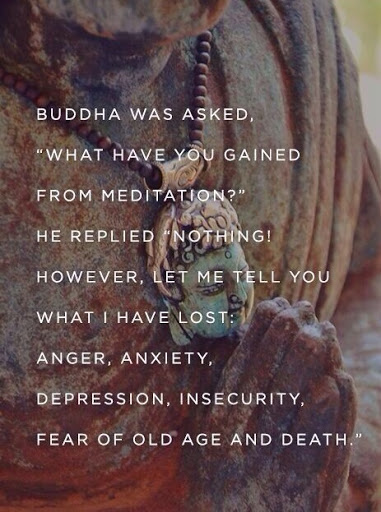
3. “When the student is ready, the teacher will appear.”

4. “The less you respond to negative people, the more peaceful your life will become.”

5. “Health is the greatest gift, contentment is the greatest
wealth, A trusted friend is the best relative, liberated mind is the
greatest bliss.”

6. “The thought manifests as the word: the word manifests as the
deed: the deed develops into character. So watch the thought and its
ways with care, and let it spring from love born out of concern for all
beings.”
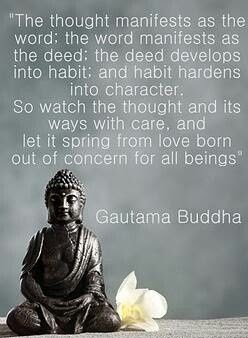
7. “Do not learn how to react learn how to respond.”
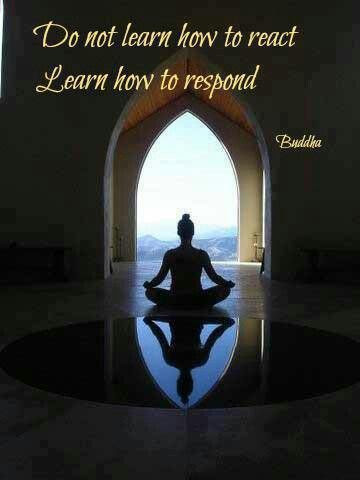
8. “If your compassion does not include yourself, It is incomplete.”
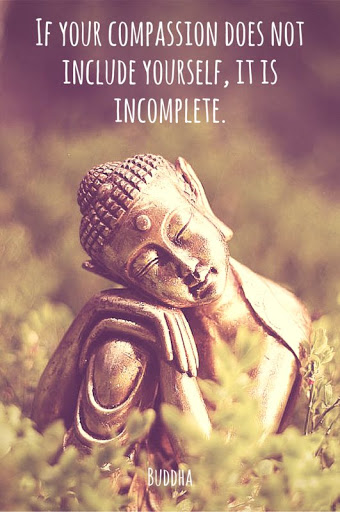
9. “Everything that has a begining has an ending.
Make your peace with that and all will be well.”

10. “If anything is worth doing, do it with all your heart.”

11. “Your worst enemy cannot harm you as much as your own unguarded thoughts.”

12. “The root of suffering is attachment.”

13. “Holding onto anger is like drinking poison and expecting the other person to die.”

14. “All that we are is the result of what we have thought.”

15. “Do not dwell in the past, do not dream of the future, concentrate the mind on the present moment.”

16. “What you think you become, what you feel, you attract. what you imagine, you create.”

17. “Nothing can harm you as much as your own thoughts unguarded.”

18. “Relax nothing is in control.”- Buddhist Meditation quotes by Lord Buddha.

20. “The trouble is you think you have time.”

21. “Your work is to discover your world and then with all your heart give yourself to it.”

22. “Believe nothing, no matter where you read it or who has
said it, not even if i have said it. Unless it agrees with your own
reason and your own common sense.”
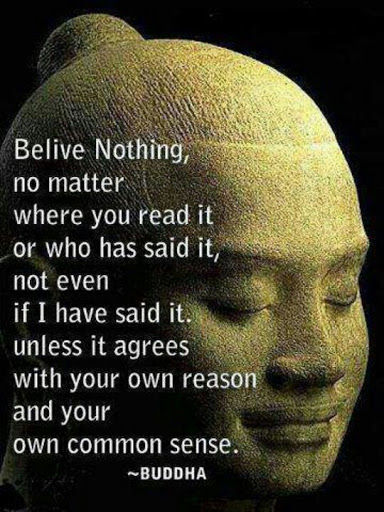
23. “Do not dwell in the past, do not dream of the future, concentrate the mind on the present moment.”

24. “On the long journey of human life… Faith is the best of companions.”
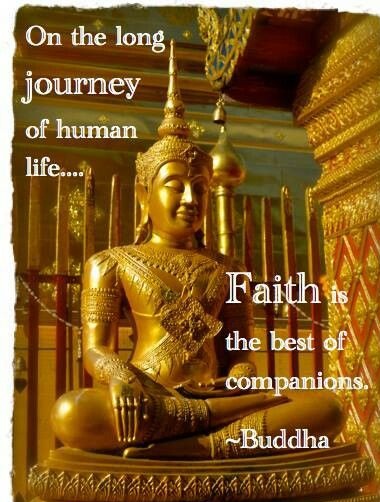
25. “To understand everything is to forgive everything.”
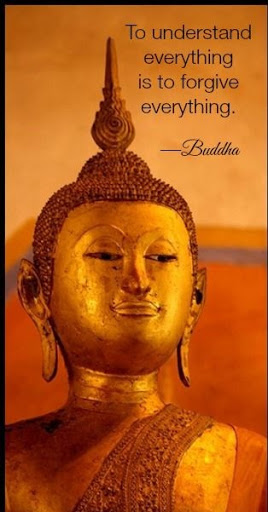
26. “Holding onto anger is like drinking poison and expecting the other person to die.”

27. “No one saves us but ourselves. No one can and no one may. We ourselves must walk the past.”

28. “There is no path to happiness: Happiness is the path.”

29. “No matter how hard the past, you can always begin again.”
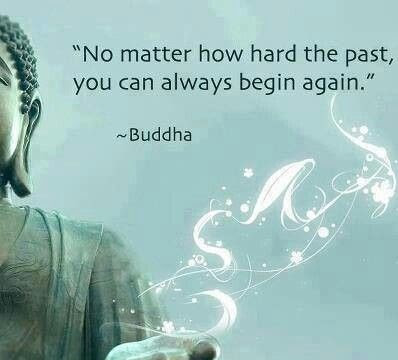
30. “If you want to fly, give upeverything yhat weighs you down.”

31. Short life quotes of Buddha- “you only lose what you cling to.”
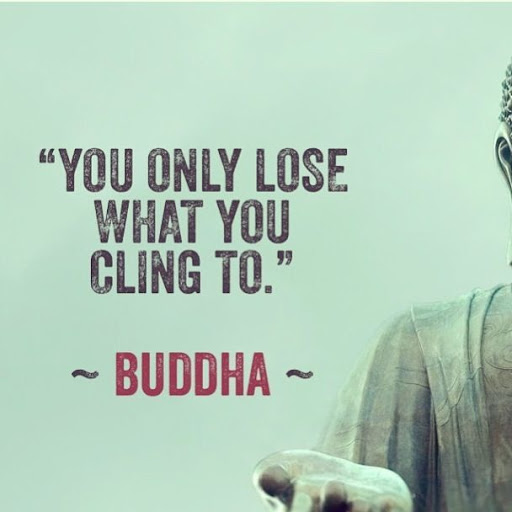
32. “when we meet real tragedy in life, we can react in two
ways- Either by losing hope and falling into self-destructive habits or
by using the challenge to find our inner strength.”
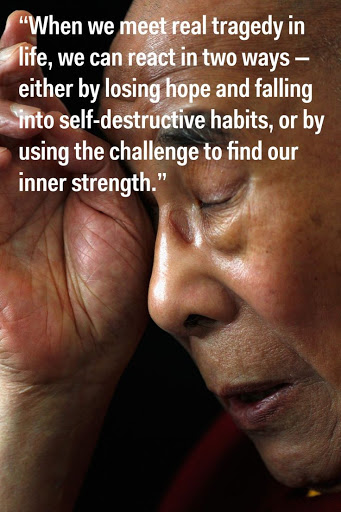
33. Buddha meditation quotes – “Nothing can harm you as much as your own thoughts unguarded.”
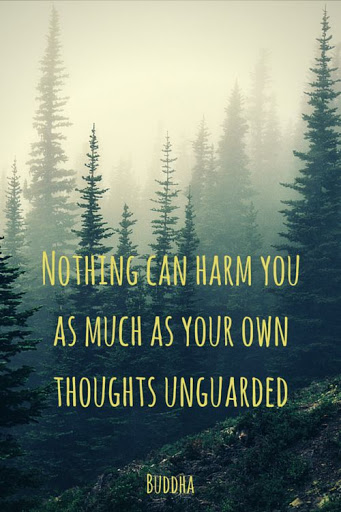
34. “Don’t rush anything. When the time is right, it’ll happen..”

35. “The whole secret of existence is to have no fear.”
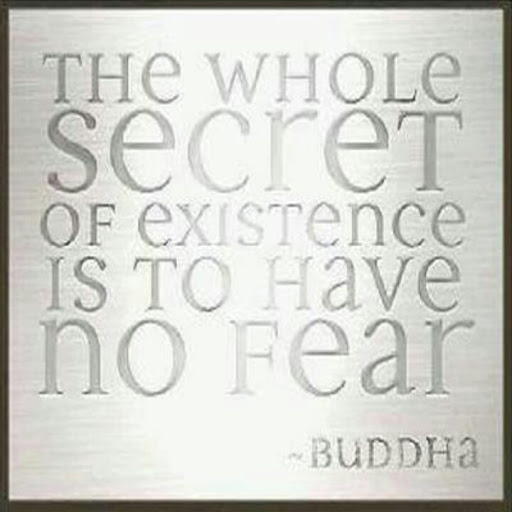
36. Real life quotes from Gautama Buddha – “Be kind to all creatures; this is the true religion.”

37. “Those who are free of resentful thoughts surely find peace.”
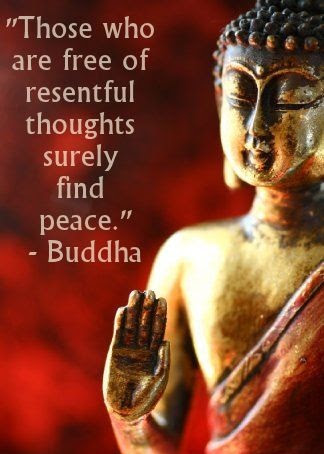
38. “No one saves us but ourselves. No one can and no one may. We ourselves must walk the path.”
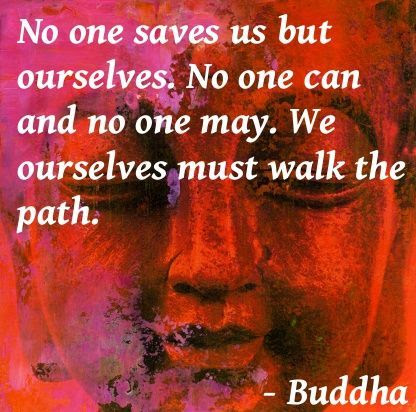
39. “Believe nothing, no matter where you read it or who has said it, not even if i have said it, unless it agrees with your own reason and your own common sense.”
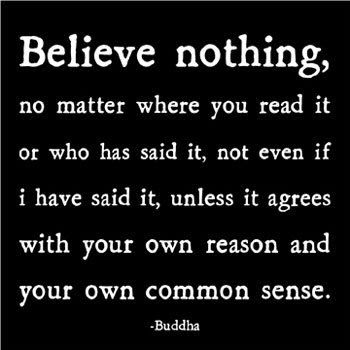
40. “It is during our darkest moments that we must focus to see the light”

41. “Quiet the mind, and the soul will speak.”

42. Inspirational quotes on karma by Buddha – “Be patient everything comes to you in the right moment.”

43. “if your compassion does not include yourself, it is incomplete.”

44. “Each morning we are born again. What we do today is what matters most.”

45. “A man who conquers himself is greater than one who conquers a thousand men in a battle.”

46. “All human unhappiness comes from not facing reality squarely, exactly as it is.”

47. “It is better to be hated for what you are than to be loved for what you are not.”

48. “He who does not understand your silence will probably not understand your words.”

49. “You will not be punished for your anger, you will be punished by your anger.”

50. “Happiness does not depend on what you haveor who you are it solely relies on what you think.”

51. “Happiness or sorrow – “whatever befalls you, walk on untouched, unattached.”
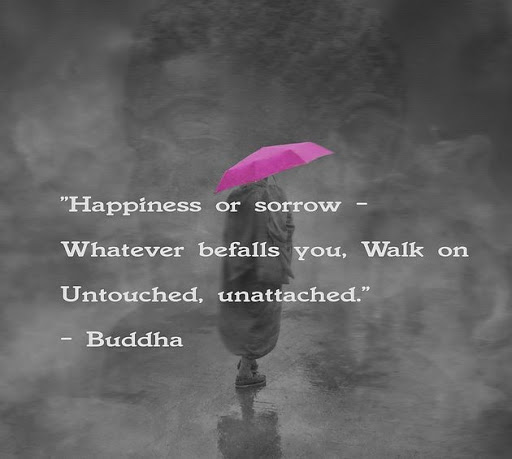
https://m.youtube.com/watch?v=lmLS8JkRwNY
2) Clasical Prakriti
https://www.google.co.in/…/prakritis-yearning-for-an…/m-lite
Prakritis Yearning for Ananda
By: Meera Panigrahi
Sep 07, 2013 07:17pm
Tagore’s play Chandalika brings out the marginalization of women—as
outcaste and the subordination she is condemned to for just being
woman. The regressive and yet accepted norms of society are obstructions
in the path of liberation and dignity for the female. Tagore has
explored all the dimensions of female subjugation and her craving for
release from a dominant social structure that inhibits personal growth
and spiritual attainments.
The play is based on a Buddhist legend associated with one of the Buddha’s disciples named Ananda.
Chandalika as her name suggests, is an outcaste. This name is given to
her by the society, her own name being Prakriti. She possesses a
rebellious nature due to the social stigma she is cursed with. Even
peddlers refuse to sell her wares. No one from a higher caste would
receive water from her hands. She was also not allowed to draw water
from a common well.
The change comes in her life when Ananda the
Buddhist monk passes by and requests her to give him some water to
quench his thirst. After some hesitation she complies . She learns to
see herself in a new light. It is Ananda who opens her eyes by his
divine preaching of equality , and makes her aware of her true self.
Prakriti sees herself as a living, breathing human being and not as an
untouchable Chandlini . His magical words “Give me water” addressed to
the frightened girl negates her sense of being an outcaste. A holy man
asking for water from a chandilini was completely unheard of . She
thenceforth emerges as a new human being , full of vitality and
exuberance in her new found freedom.
She falls in love with him
and wants to possess him, but later realizes that in doing so, she would
be deflecting Anaanda from his chosen Path and hence lets him go.
Here are some fine extracts from the play:
MOTHER. Did you tell him that you are a Chandalini?
PRAKRITI. I told him, yes. He said it wasn’t true. If the black clouds
of Sravana are dubbed Chandal, he said, what of it? It doesn’t change
their nature, or destroy the virtue of their water. Don’t humiliate
yourself, he said; self-humiliation is a sin, worse than self-murder. ‘
PRAKRITI. He said that Janaki bathed in such water as this, at the
beginning of her forest exile, and the Guhak, the Chandal, drew it for
her. My heart has been dancing ever since, and night and day I hear
those solemn tones- ‘Give me water, give me water.’
PRAKRITI. I
want him. All unlooked for- he came, and taught me this marvelous truth,
that even my service will count with the God who guides the world. O
words of great wonder! That I may serve, I, a flower sprung from a
poison-plant! Let him raise that truth, that flower from the dust, and
take it to his bosom.
In the end Prakriti follows Ananda the ascetic, into a world of spiritual calmness chanting Buddham saranam gacchami .
जो नित्य एवं स्थाई प्रतीत होता है, वह भी विनाशी है। जो महान प्रतीत होता है, उसका भी पतन है। जहाँ संयोग है वहाँ विनाश भ…
https://books.google.co.in/books…’s+words+in+Prakruthi&source=bl&ots=dXV1BwLCy1&sig=YrGvivrIgIlEYJfZfuc2kNFDKrc&hl=en&sa=X&ved=2ahUKEwiXgqL8xufbAhUMLo8KHYUMAycQ6AEwGnoECAMQAQ#v=onepage&q=Buddha’s%20words%20in%20Prakruthi&f=false
https://en.m.wikipedia.org/wiki/Prakṛti
Prakṛti, also Prakṛiti or Prakṛuti (from Sanskrit language प्रकृति,
prakṛti), means “nature”.[1][2] It is a key concept in Hinduism,
formulated by its Samkhya school, and refers to the primal matter with
three different innate qualities (Guṇas)
whose equilibrium is the basis of all observed empirical reality.[1][3]
Prakriti, in this school, contrasts with Purusha which is pure
awareness and metaphysical consciousness.[1] The term is also found in
the texts of other Indian religions such as Jainism,[4] and Buddhism.[5]
In Indian languages derived from Indo-European Sanskrit roots, Prakriti
refers to the feminine aspect of all life forms, and more specifically a
woman is seen as a symbol of Prakriti.[6]
Prakriti (Sanskrit:
प्रकृति) is a Vedic era concept, which means “making or placing before
or at first, the original or natural form or condition of anything,
original or primary substance.”[7] The term is discussed by Yāska (~600
BCE) in Nirukta, and found in numerous Hindu texts.[7] It connotes
“nature, body, matter, phenomenal universe” in Hindu texts.[6][8]
Yāska was an early Sanskrit grammarian who preceded Pāṇini (fl. 6-5th
century BCE[1]), assumed to have lived in the 7th century BCE. Nothing
is known about him other than that he is traditionally identified as the
author of Nirukta, the discipline of “etymology” (explanation of words)
within Sanskrit grammatical tradition.
It
has been said that a psychiatrist’s mind is like a doctor’s
handwriting. In my first English book, Parivarthana (the change), I have
made a mention about “Shrink”. I am of the opinion that a psychiatrist
would remain shrunk unless he does not come out from the western ideas
and….

Buddha


http://punjabijanta.com/…/america-enlisted-rss-in-one-of-t…/
January 08, 2018, 08:45:22 AM
Punjabi Janta Forums - Janta Di Pasand »
Lounge / Jail Pinjra »
News Khabran (Moderator: MyselF GhainT) »
America enlisted RSS in one of the Biggest Terrorist Organisations in the World
America enlisted RSS in one of the Biggest Terrorist Organisations in the World
« on: October 17, 2015, 01:08:31 PM »
A US-based risk management and consulting company has put the Rashtriya
Swayamsevak Sangh (RSS) in its category of ‘Threat Group’ and called it
“a shadowy, discriminatory group that seeks to establish a Hindu
Rashtra, a Hindu Nation.”
Terrorism Watch & Warning provides
intelligence, research, analysis, watch and warning on international
terrorism and domestic terrorism related issues; and is operated by OODA
Group LLC that helps clients identify, manage, and respond to global
risks and uncertainties while exploring emerging opportunities and
developing robust and adaptive strategies for the future.
The company had included RSS in its ‘Threat Group’ in April 2014. .
The websites describes: “The RSS is a shadowy, discriminatory group
that seeks to establish a Hindu Rashtra, a Hindu Nation. The group is
considered the radical ideological parent group of India’s ruling Hindu
nationalist party - the Indian Peoples Party (BJP). “
“The RSS is
a Hindu nationalist movement, a right wing group that was founded in
1925. Their philosophy, called Hindutva, was termed fascist by
Communists, and their main demand of the central government was that it
stop appeasing Muslims,” the description continues , adding, “Hindutva
has been translated to mean variously: Hindu pride, patriotism,
fundamentalism, revivalism, chauvinism, or fascism. The group
self-justifies by ‘asserting the natural rights’. “
In its ‘Intel
analysis,’ it further adds, “The RSS was banned in 1948 following the
assassination of Mahatma Gandhi by an ex-RSS member, Nathuram Godse. The
ban was lifted the following year. Since then, the group has gained
popularity. It later began the Bharatiya Janata Party (BJP), widely
considered the political arm of the RSS, which now heads the central
government of India. “
Describing violence as ‘Group Activities’
for the RSS, the site further says, “Violence has been a strategy for
the Sangh movement. It is often couched as a method of self-defense
against minority groups. Hindutva has been clear about the need for
violence, particularly communal riots. The Sangh has incited rioting to
cause further chasms between religions, and thus a further separation of
religions, and to rally the Hindu community around the philosophy of
Hindutva. “
The Terrorism Watch & Warning database contains
over 1,00,000 Open source intelligence (OSINT) excerpts from 1999 to
present on terrorism and security related issues, attack database of
over 10,000 attacks, original terrorism analysis, terrorism document
repository, Homeland Security Fact Sheets and profiles over 500
Terrorist / Threat Groups.
America enlisted RSS in one of the Biggest Terrorist Organisations in the World
America enlisted RSS in one of the Biggest Terrorist Organisations in the World

“How a Bihari lost his mother tongue to Hindi”.
Frawley, William (2003-05). International Encyclopedia of Linguistics: 4-Volume Set. Oxford University Press, USA. ISBN 9780195139778.
“History of Indian Languages”. Diehardindian.com. Archived from the original on 2012-02-26. Retrieved 2012-02-29.
Verma, Mahandra K. “Language Endangerment and Indian languages : An exploration and a critique”. Linguistic Structure and Language Dynamics in South Asia.
Jain Dhanesh, Cardona George, The Indo-Aryan Languages, pp449
P. 23 The legends and theories of the Buddhists compared with history and science … By Robert Spence Hardy
Maitra Asim, Magahi Culture, Cosmo Publications, New Delhi (1983), pp. 64
“Maithili and Magahi”. Retrieved 2011.
Brass Paul R., The Politics of India Since Independence, Cambridge University Press, pp. 183
Jain Dhanesh, Cardona George, The Indo-Aryan Languages, pp500
मृत्युंजय कुमार. “मागधी”. Magadhee.blogspot.com. Retrieved 2012-02-29.
 Online A1 (Awakened One) Tipiṭaka Research & Practice University
Online A1 (Awakened One) Tipiṭaka Research & Practice University










































































































